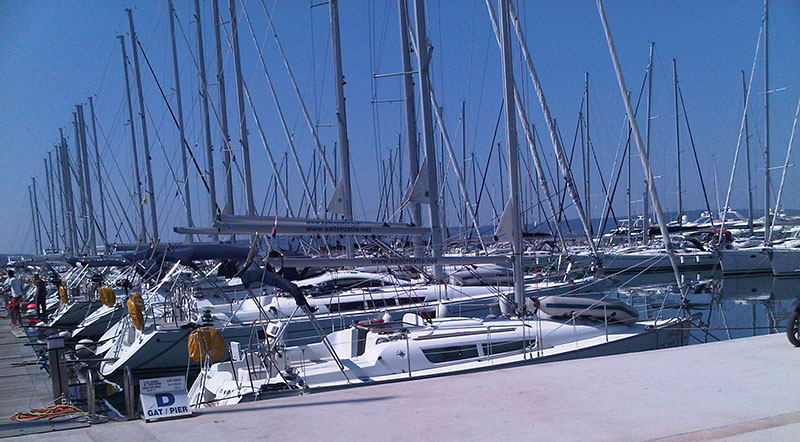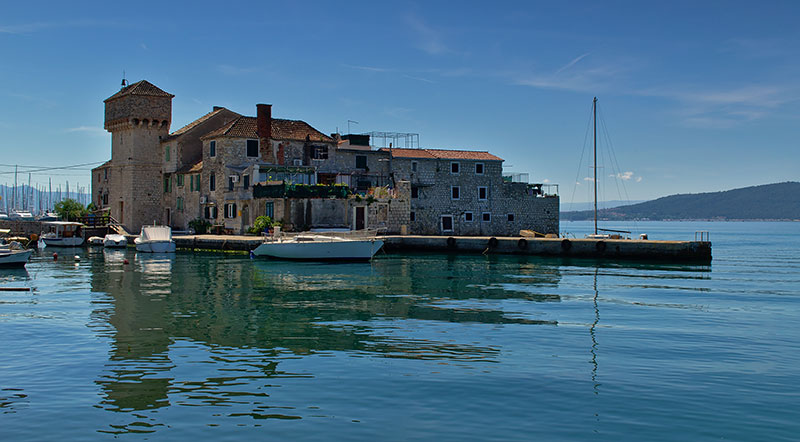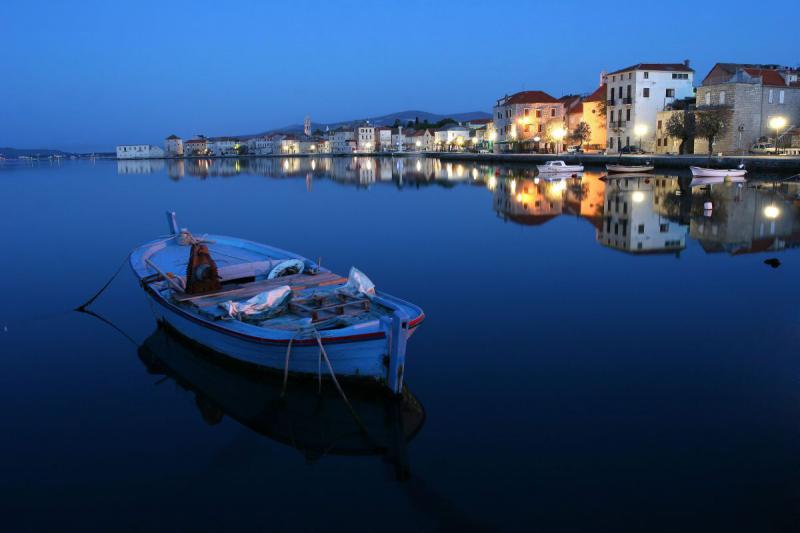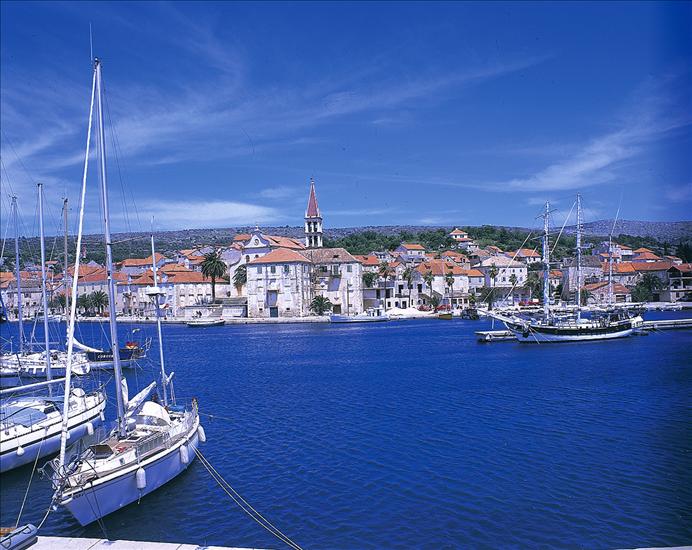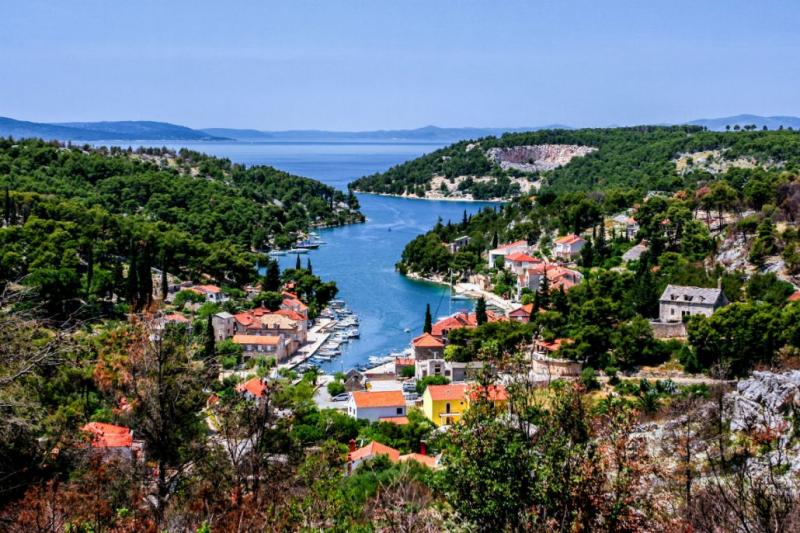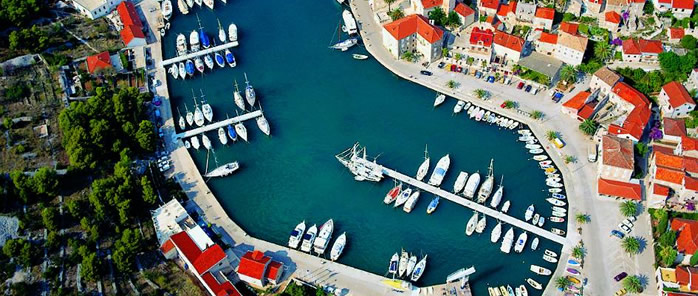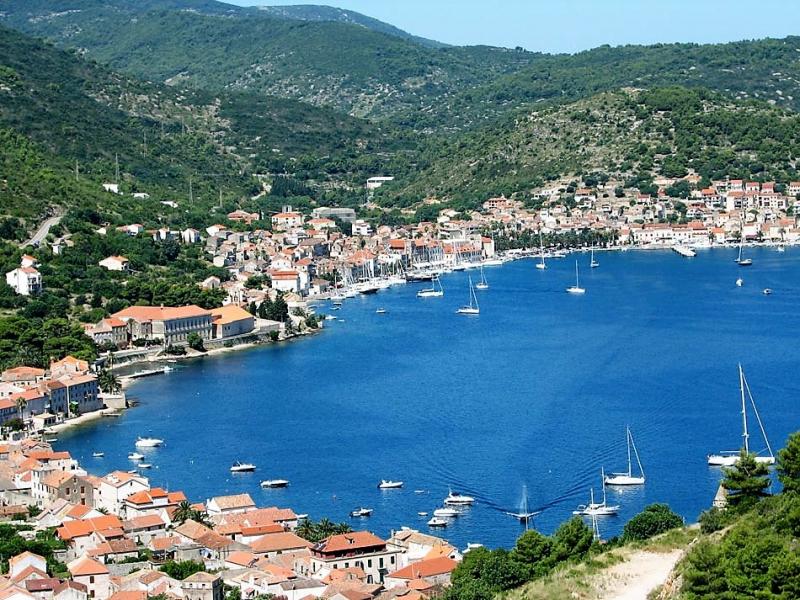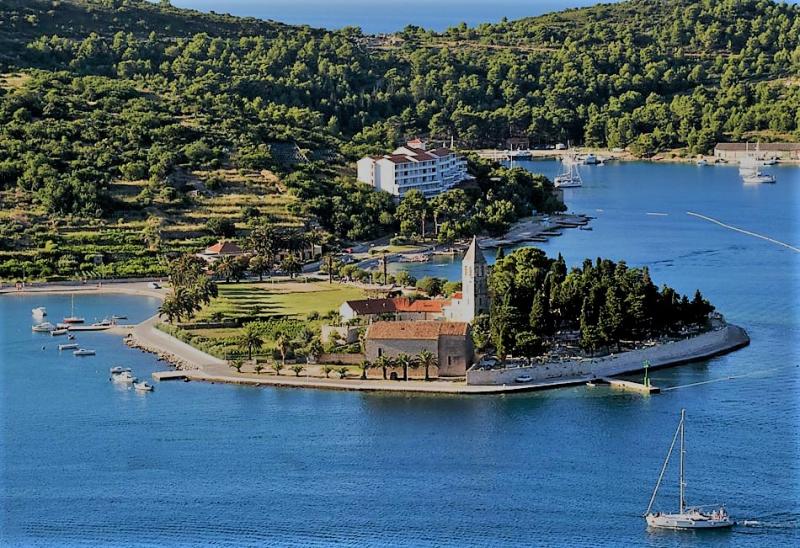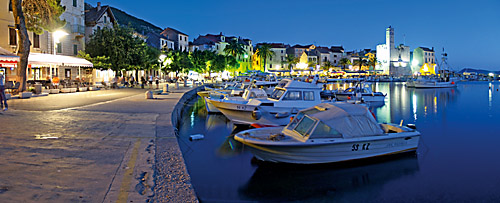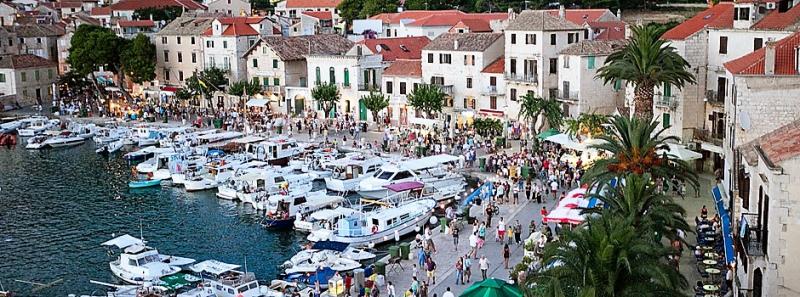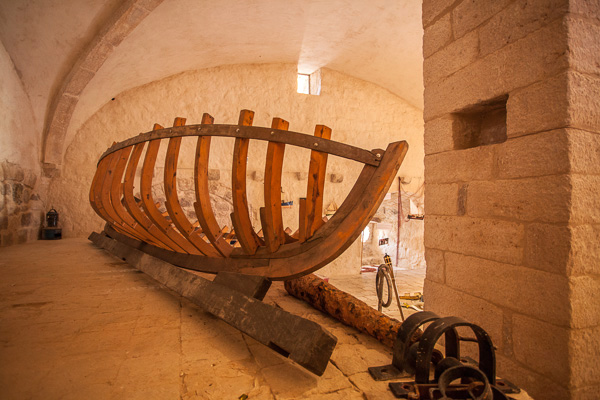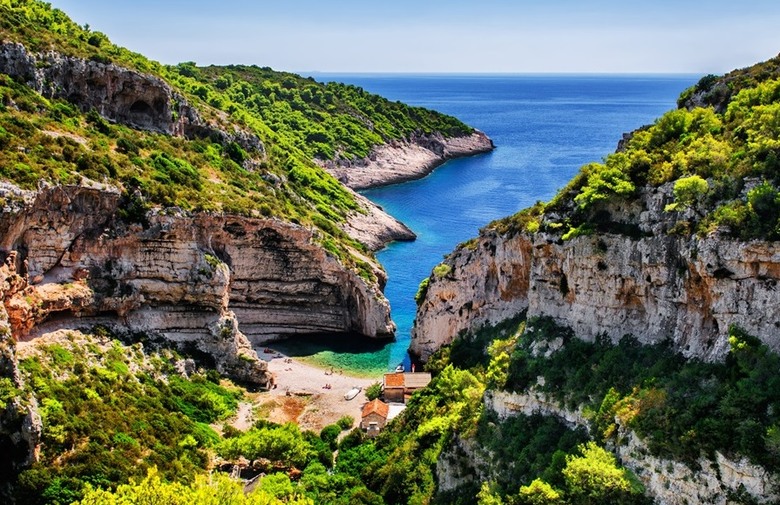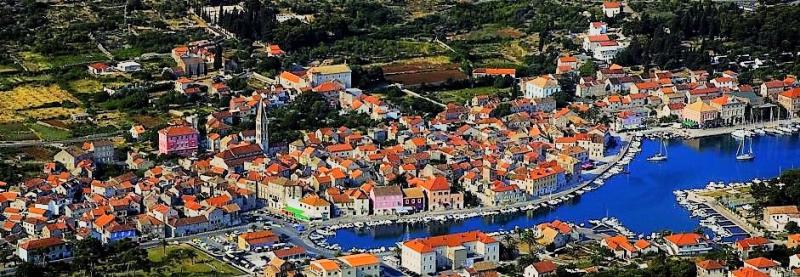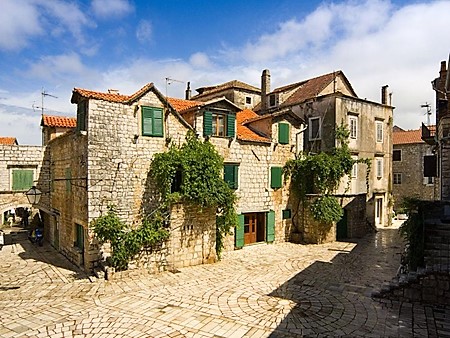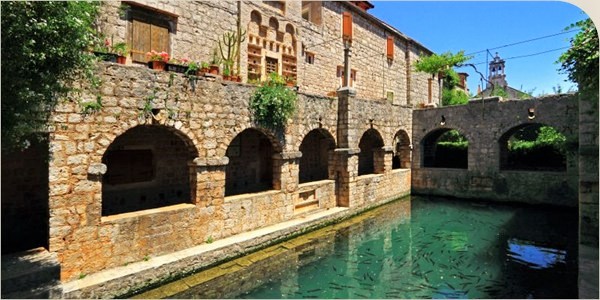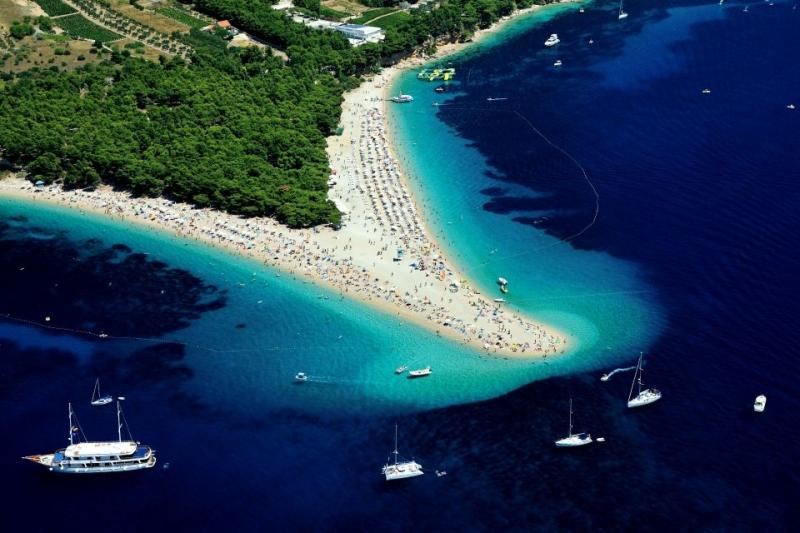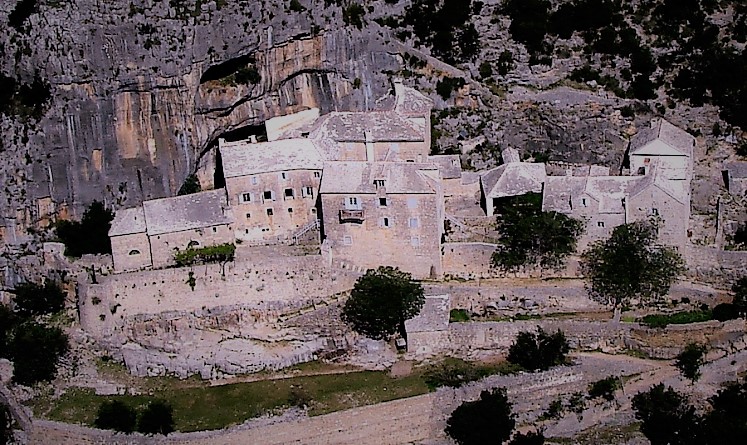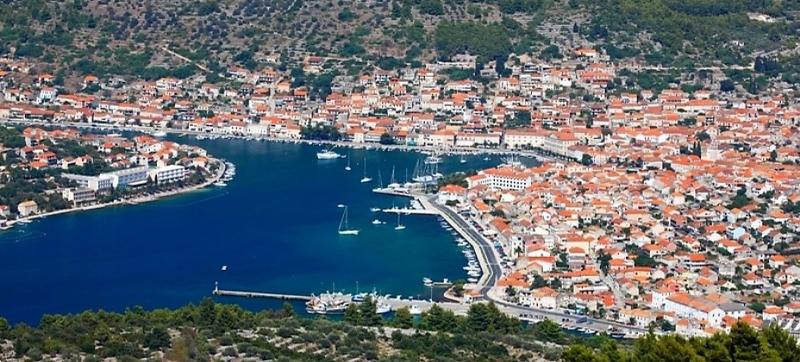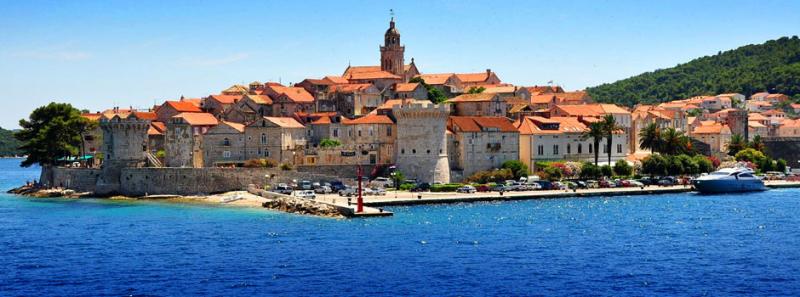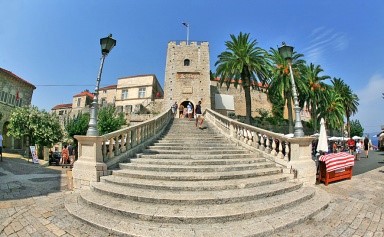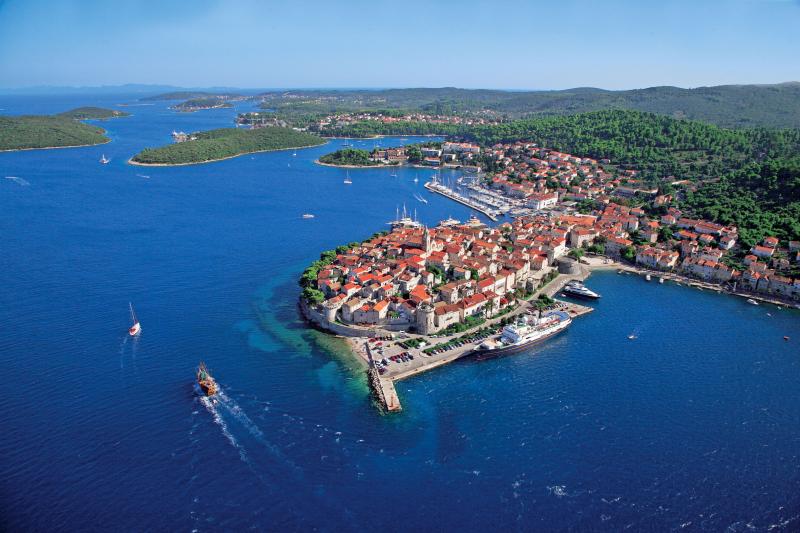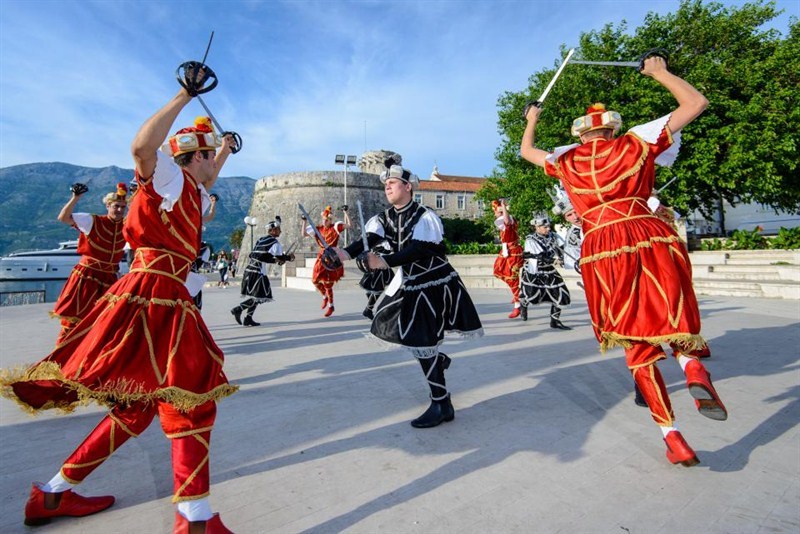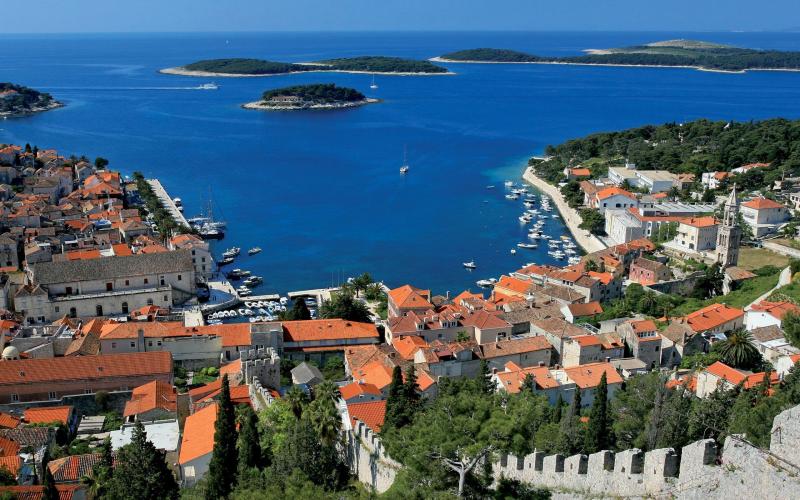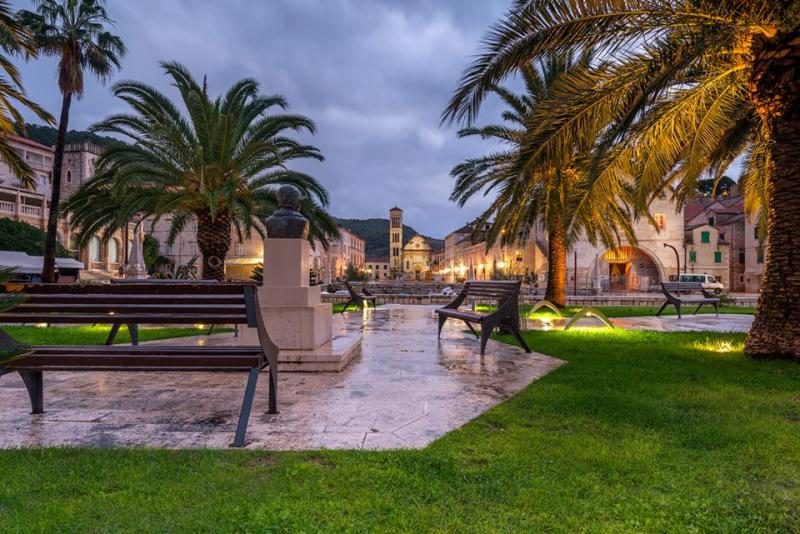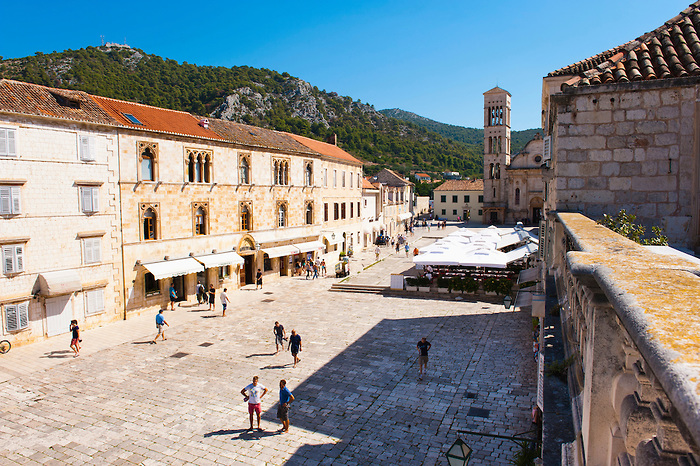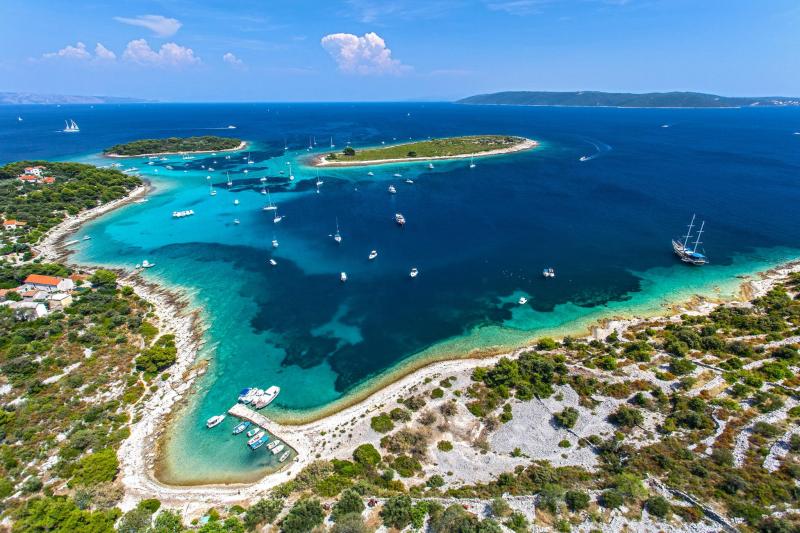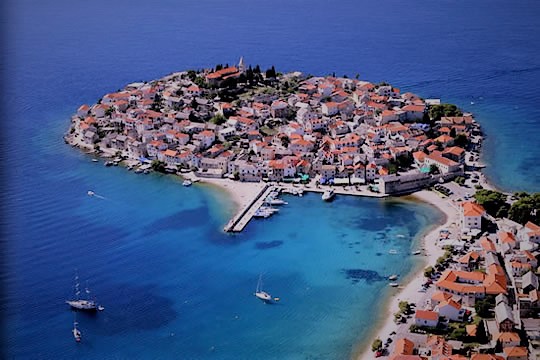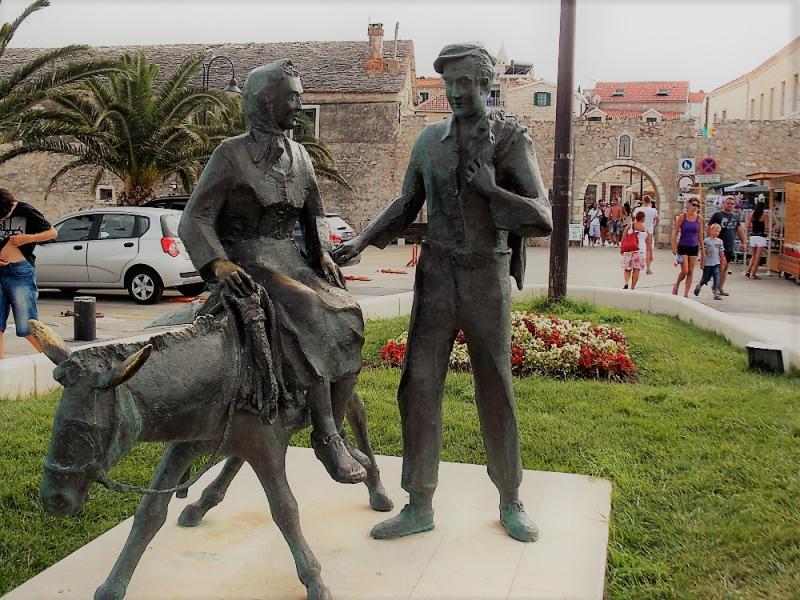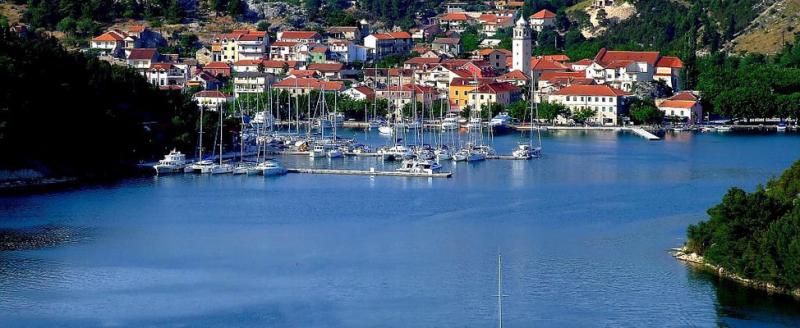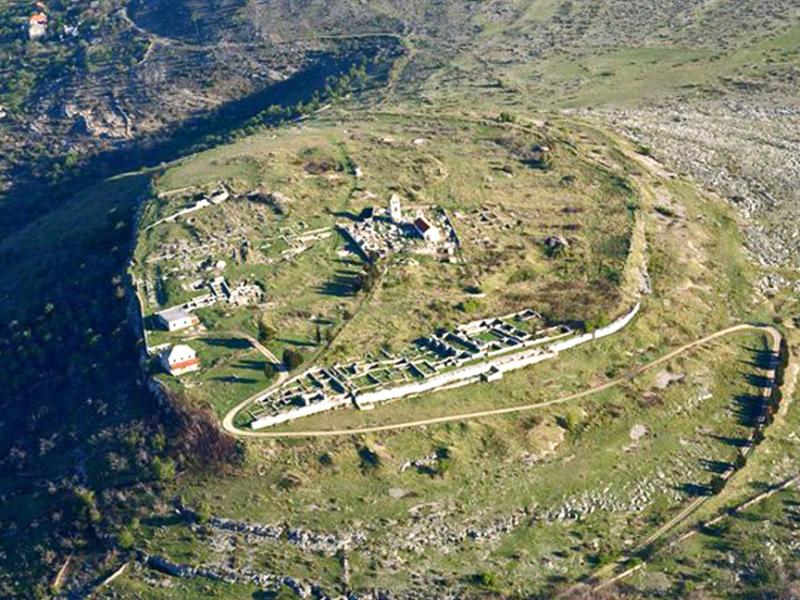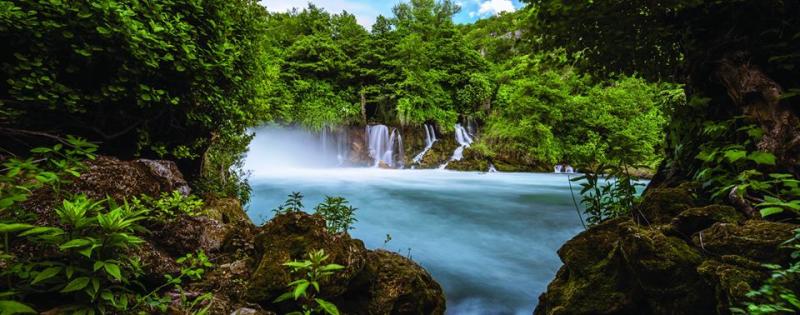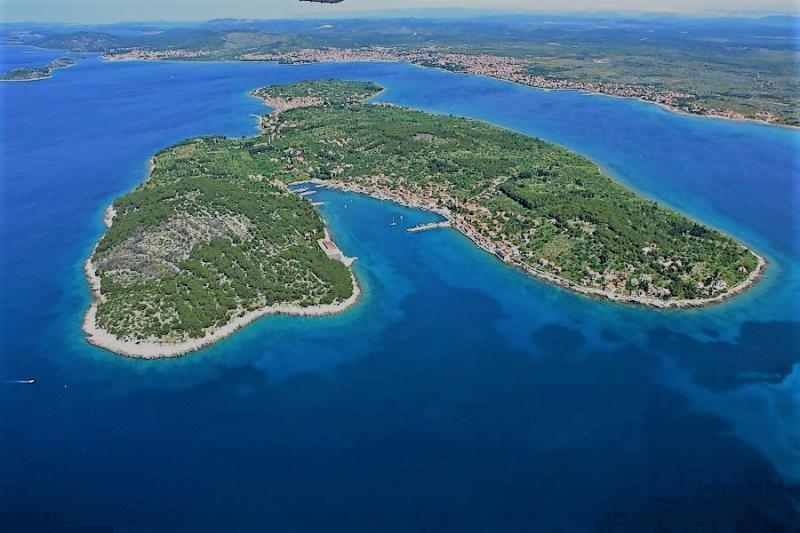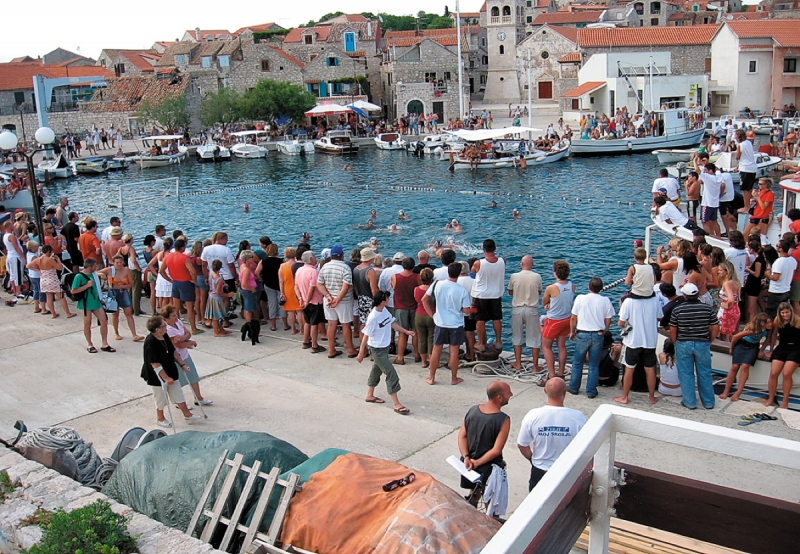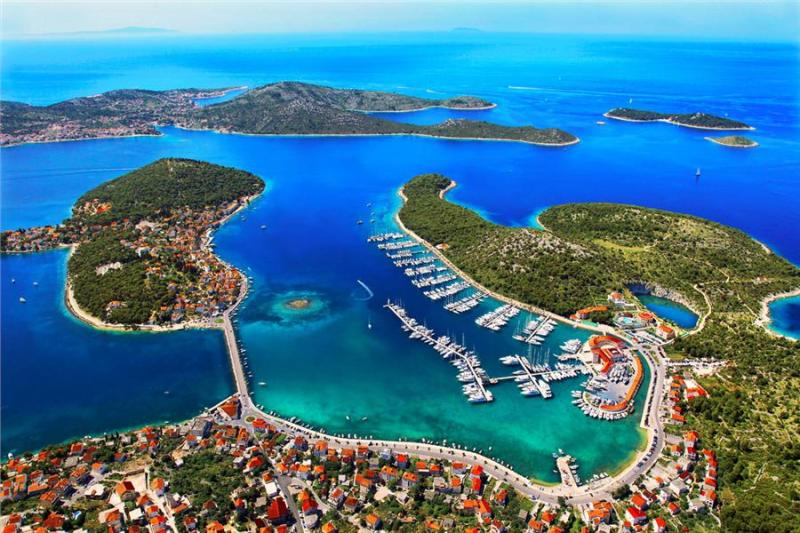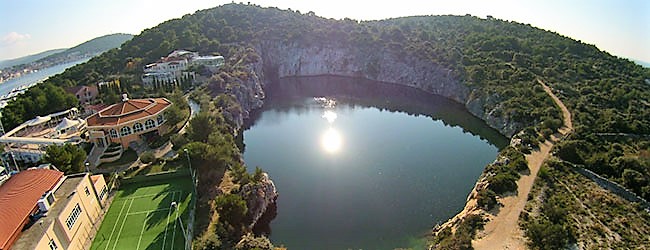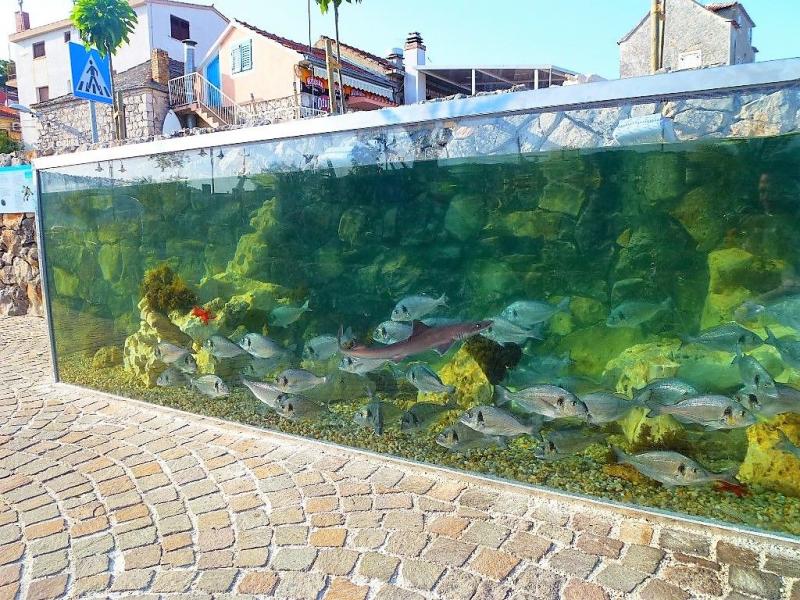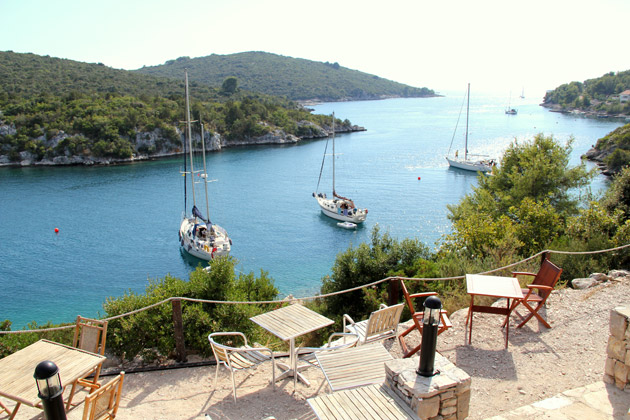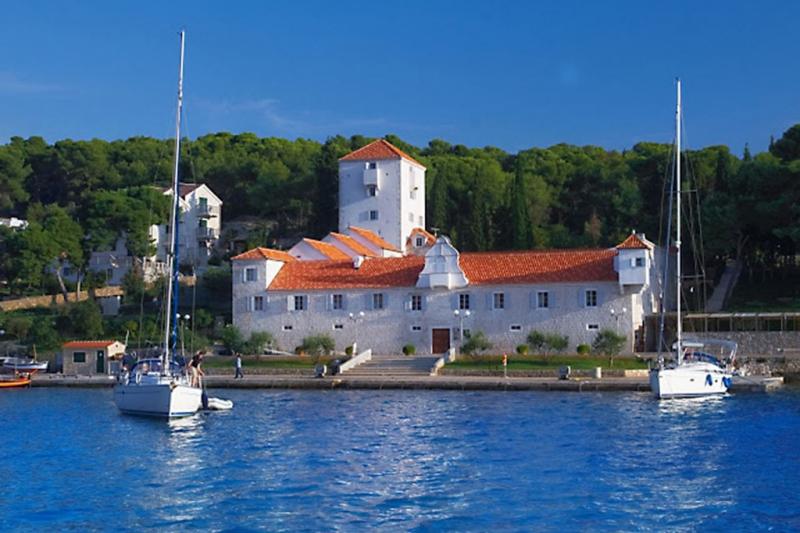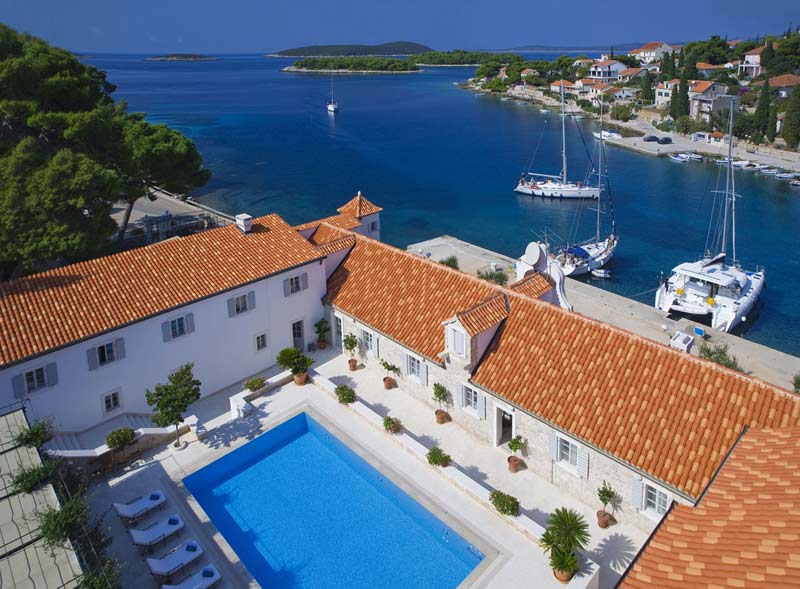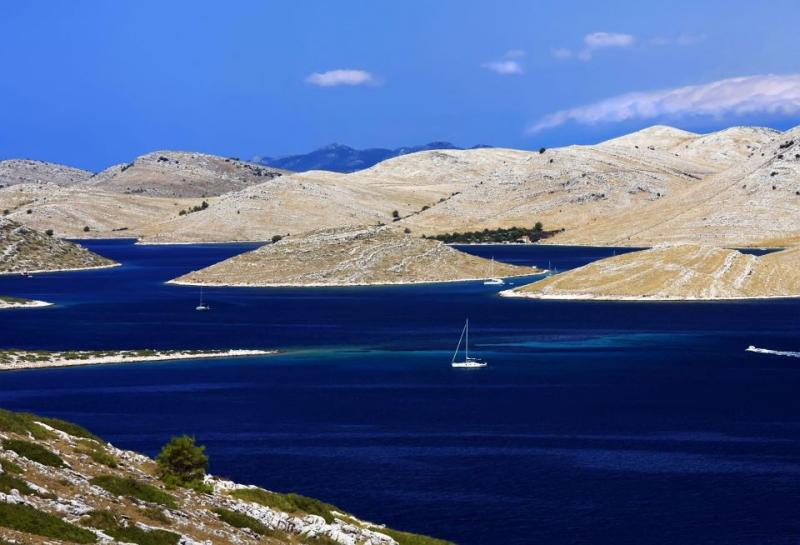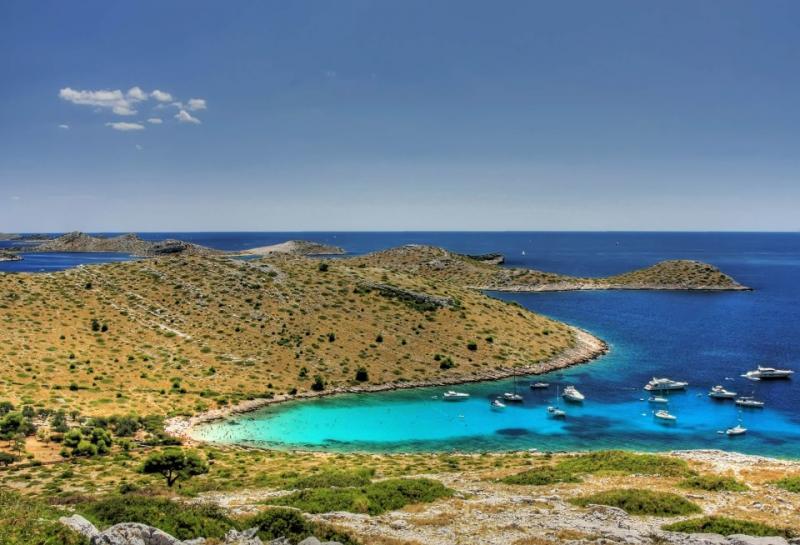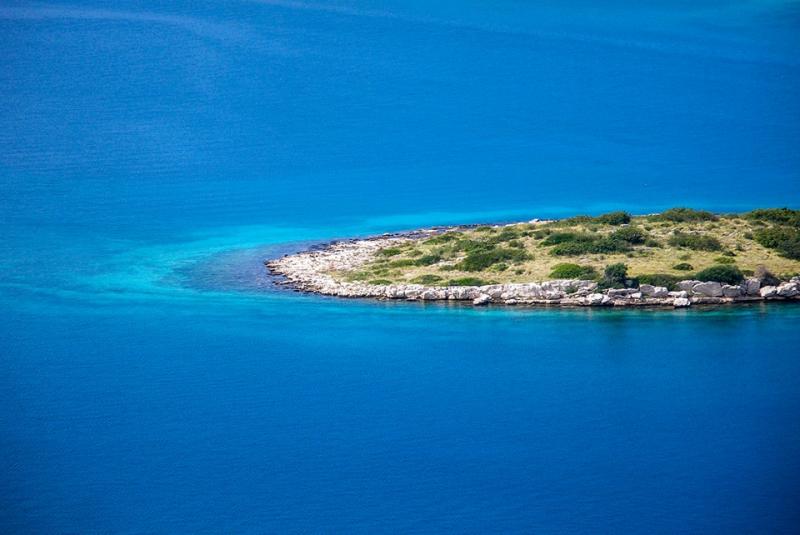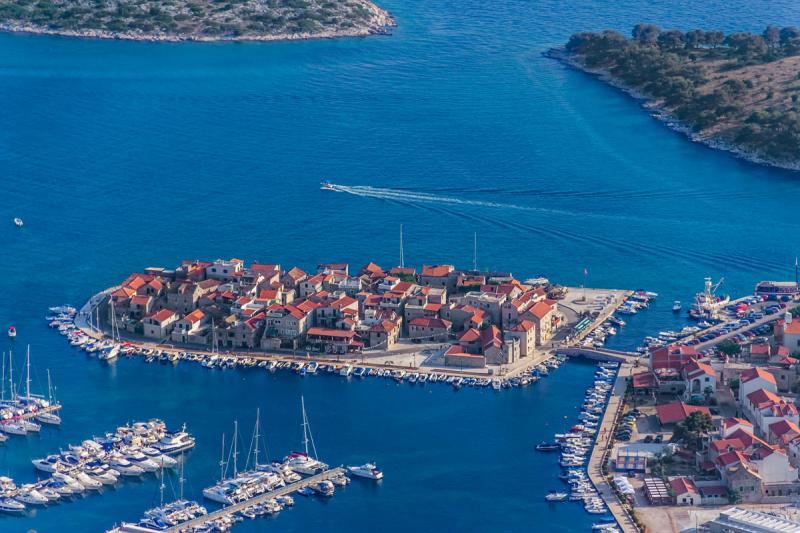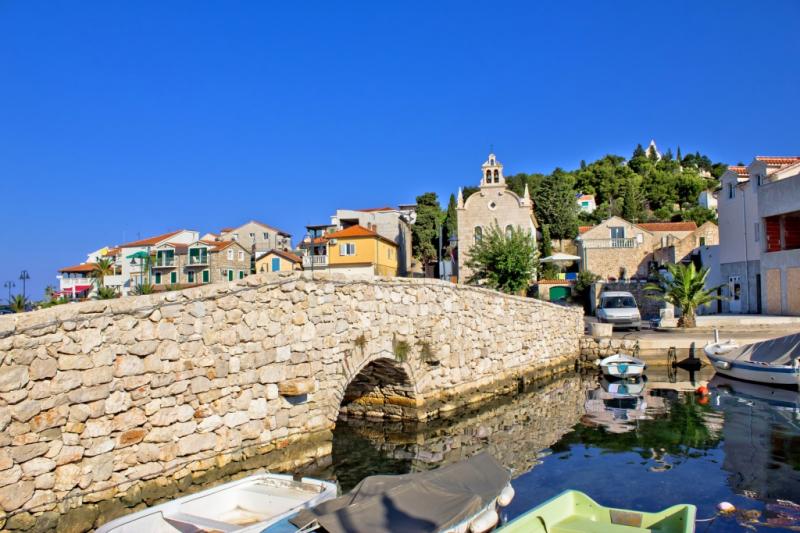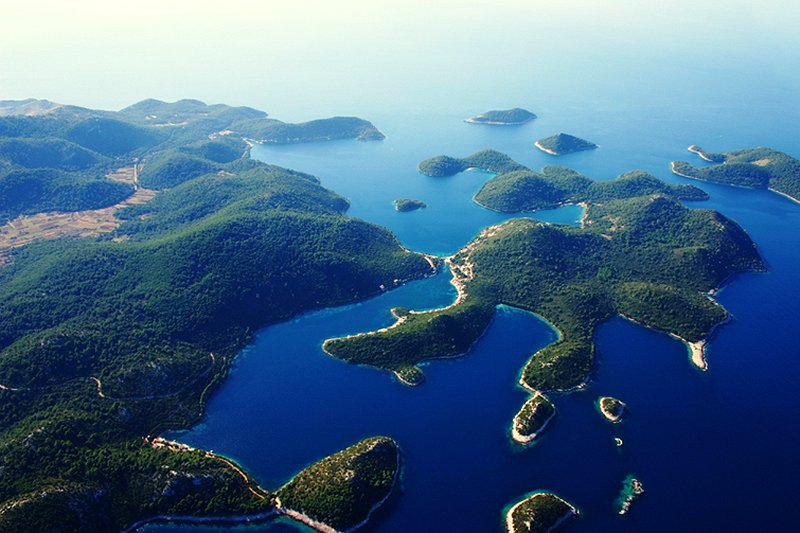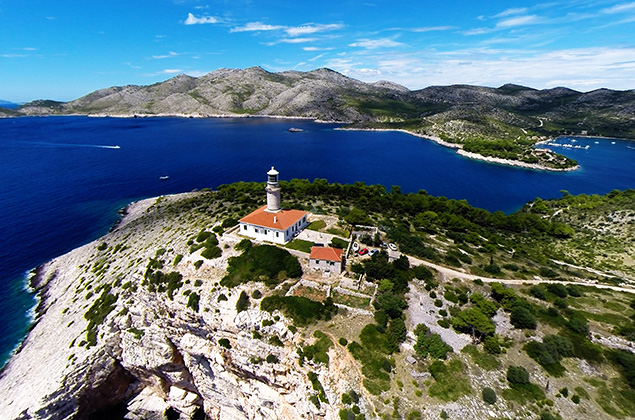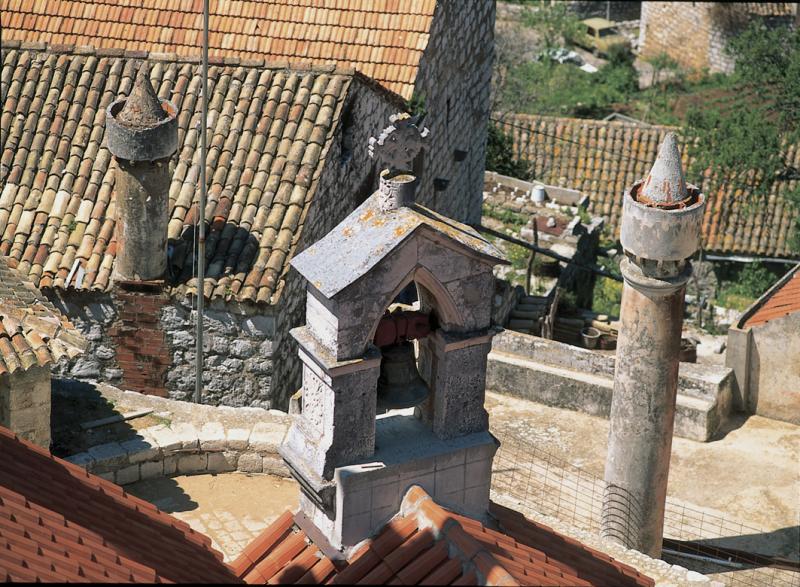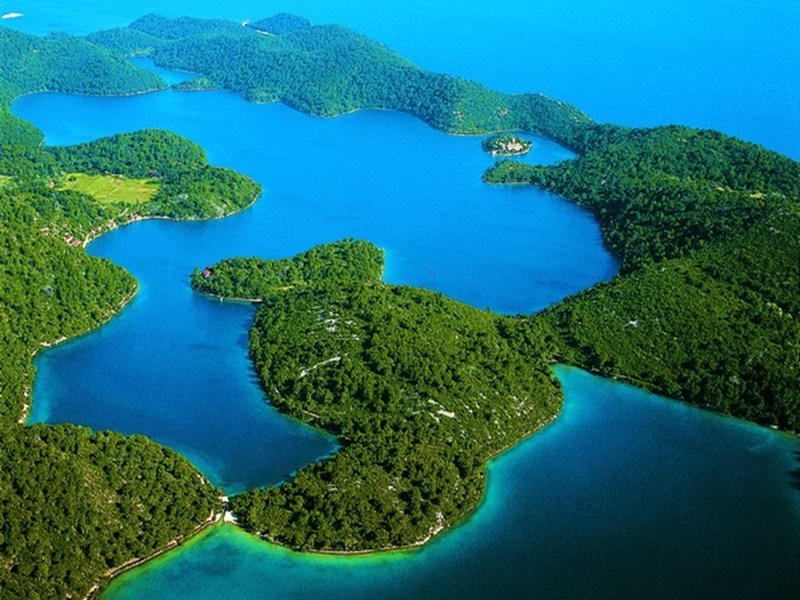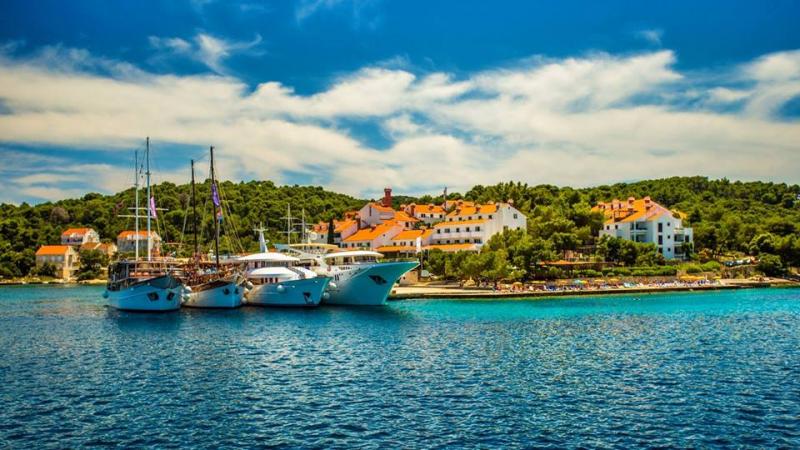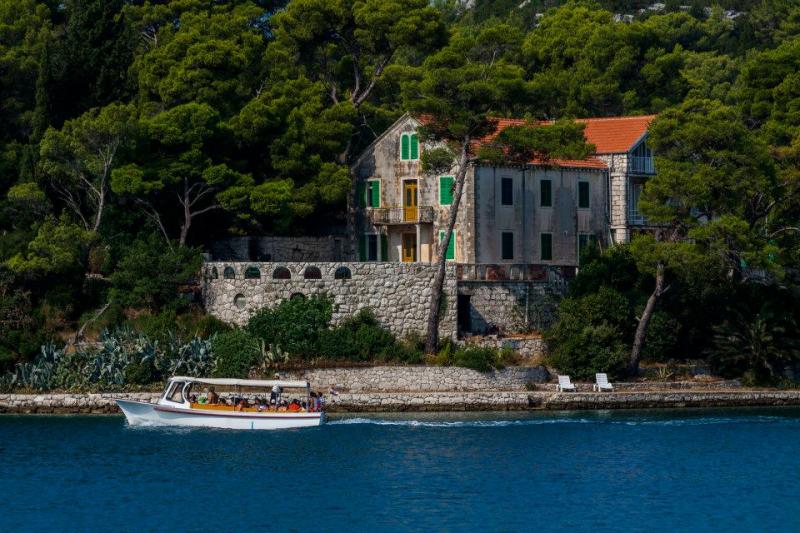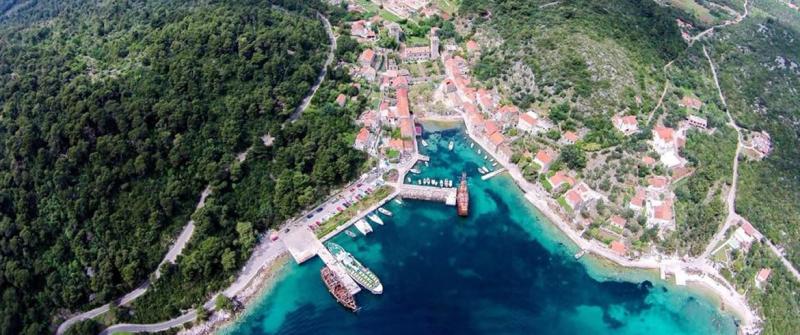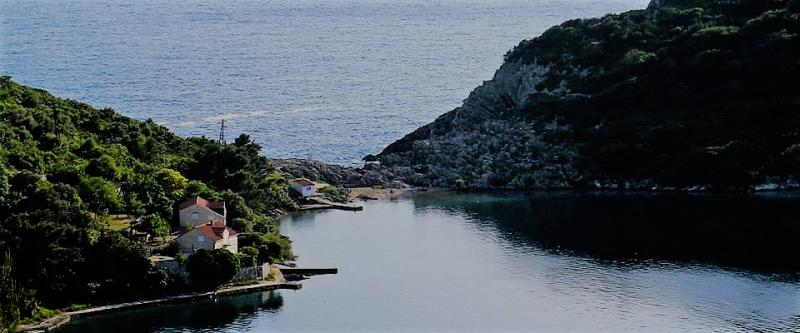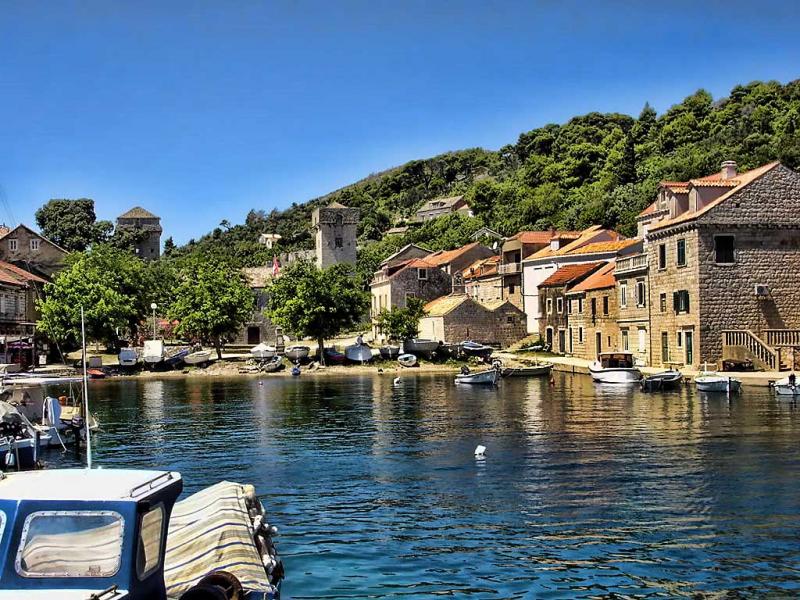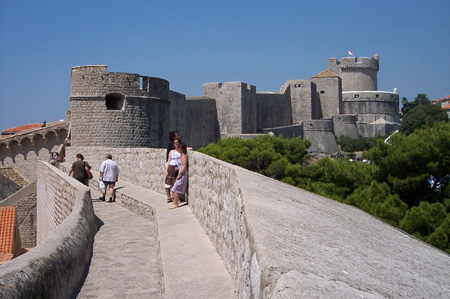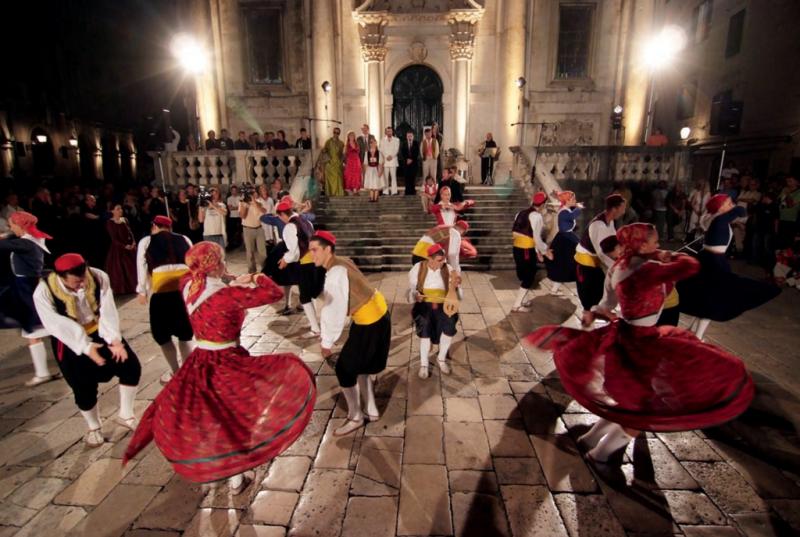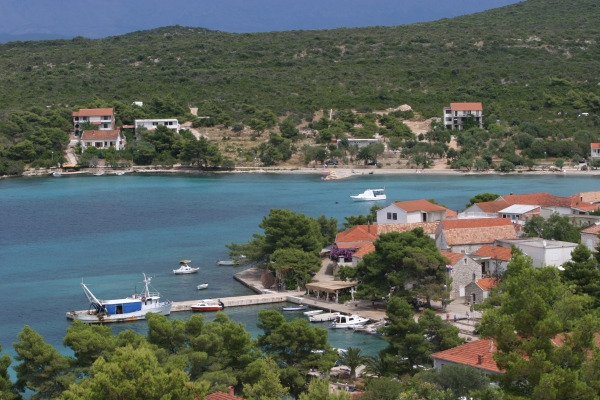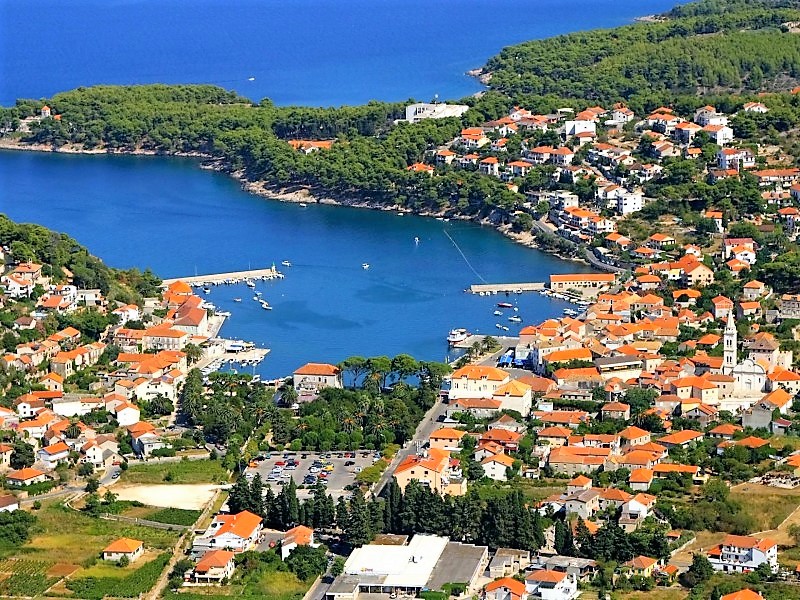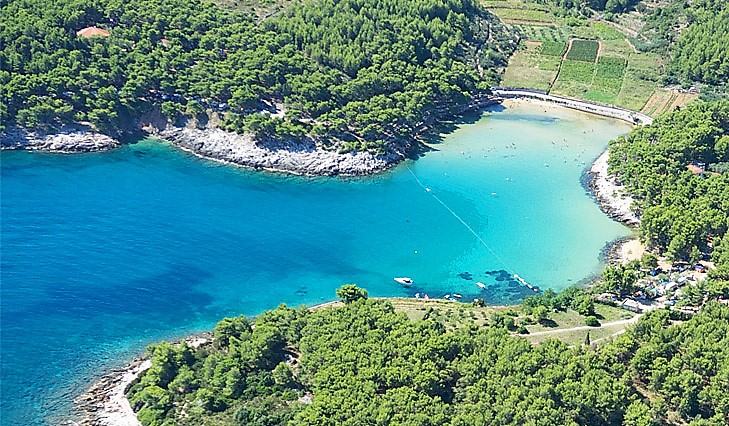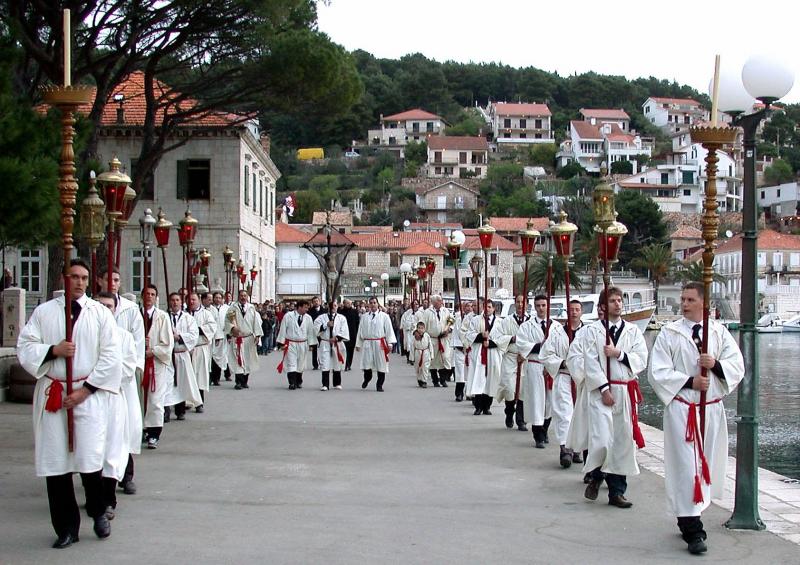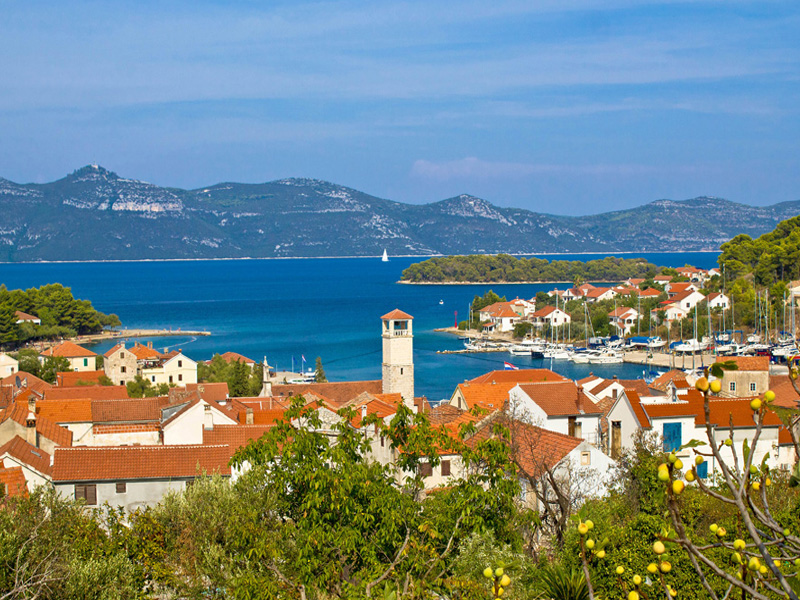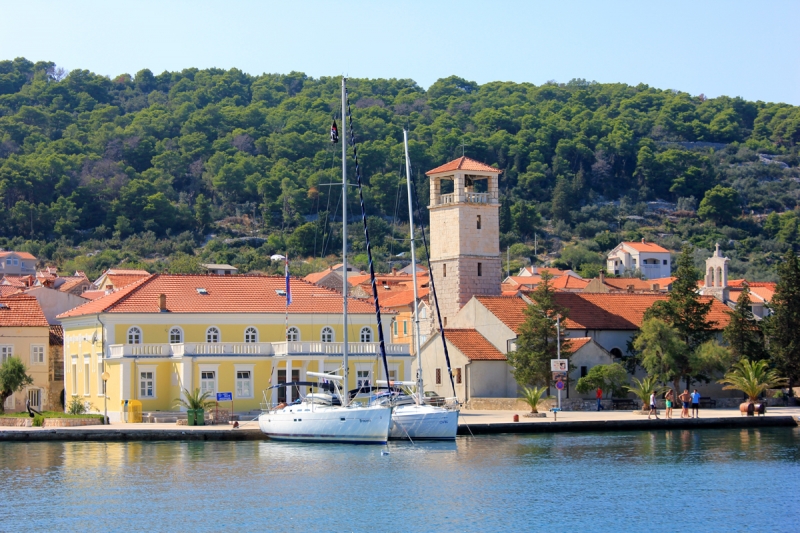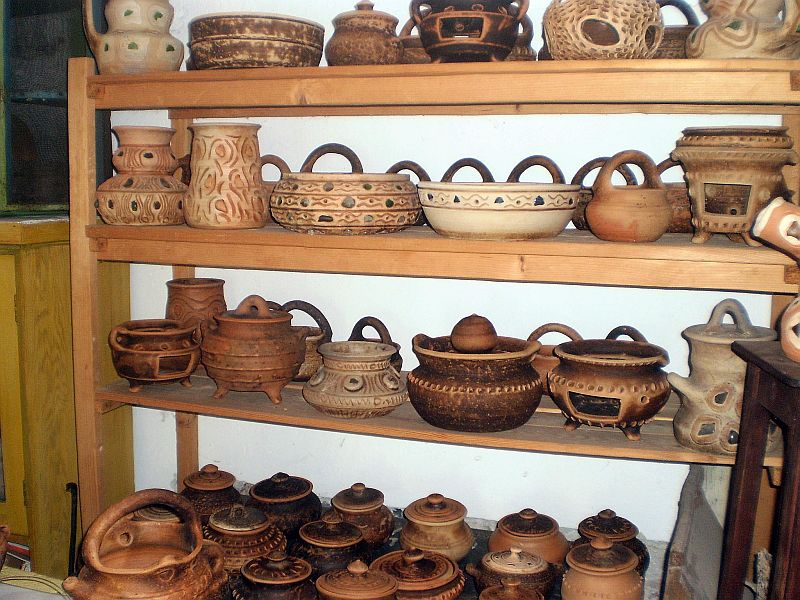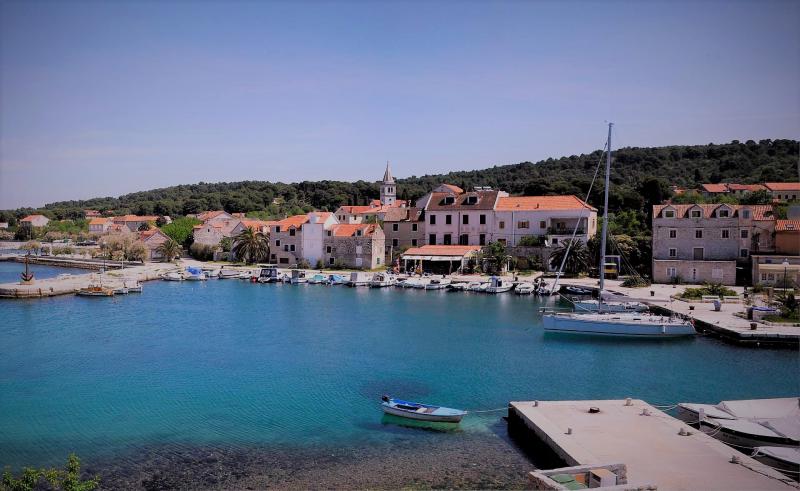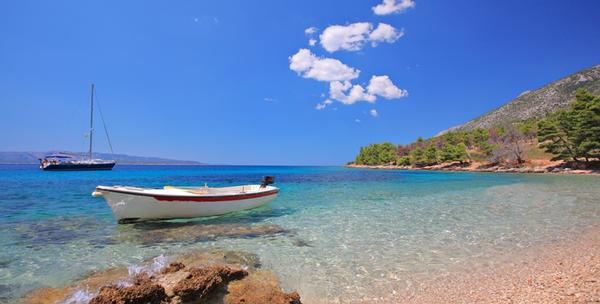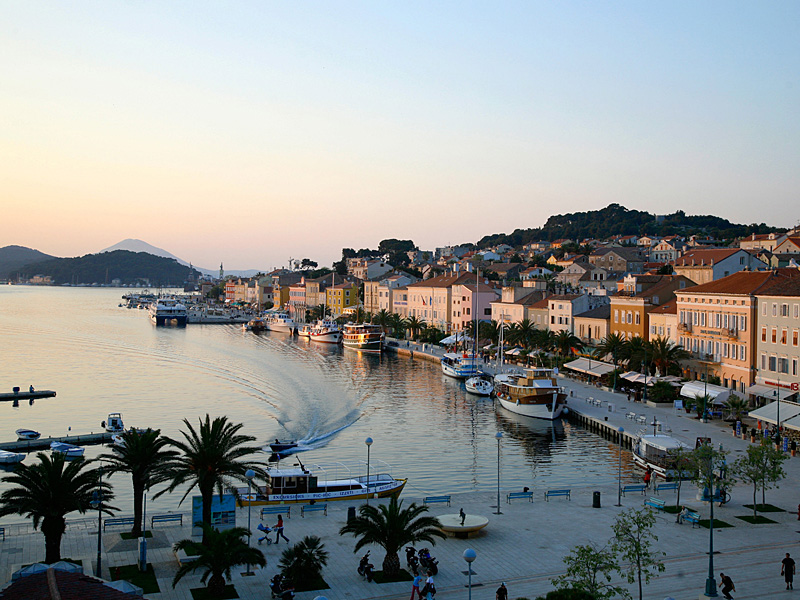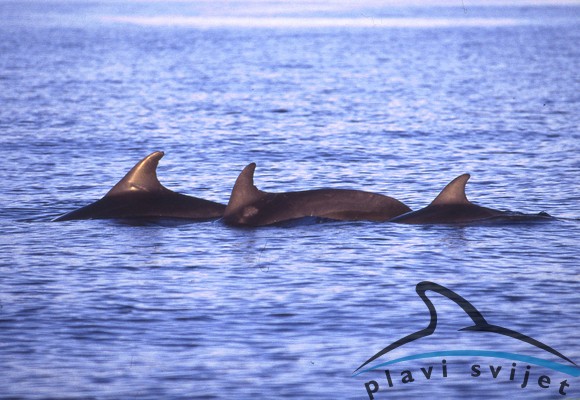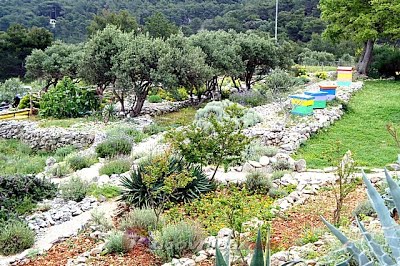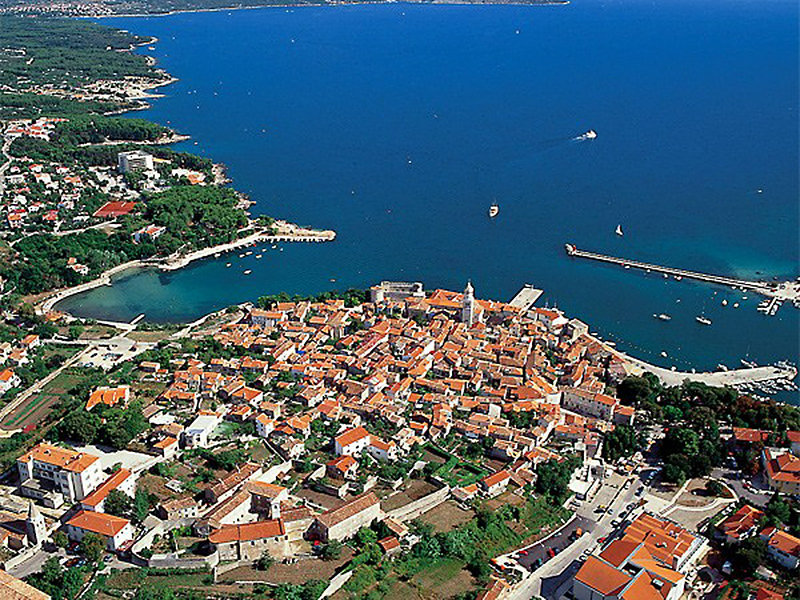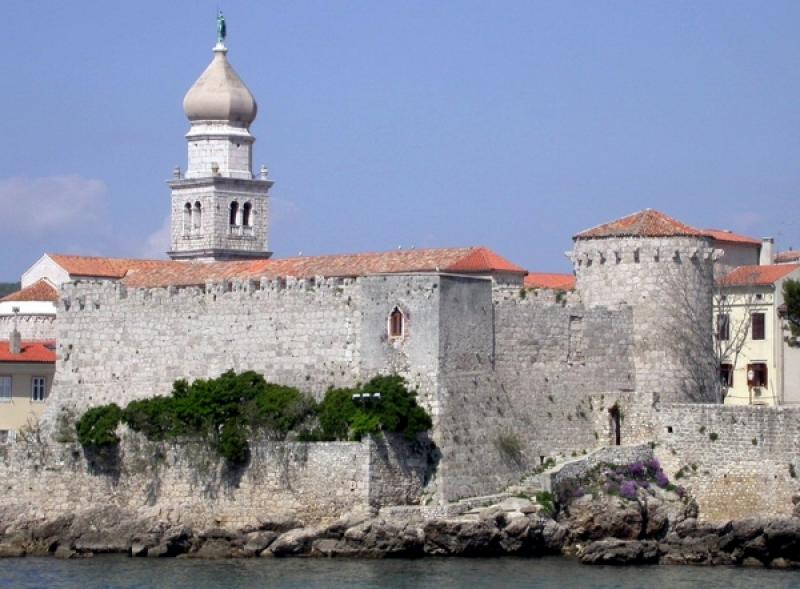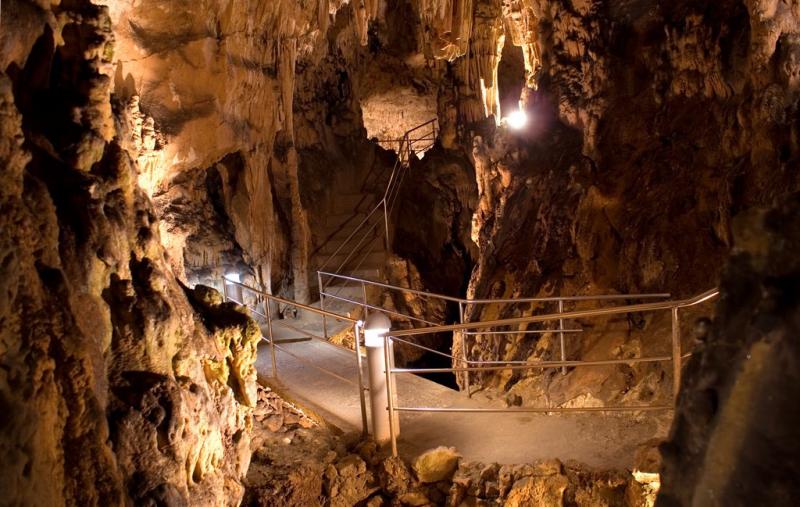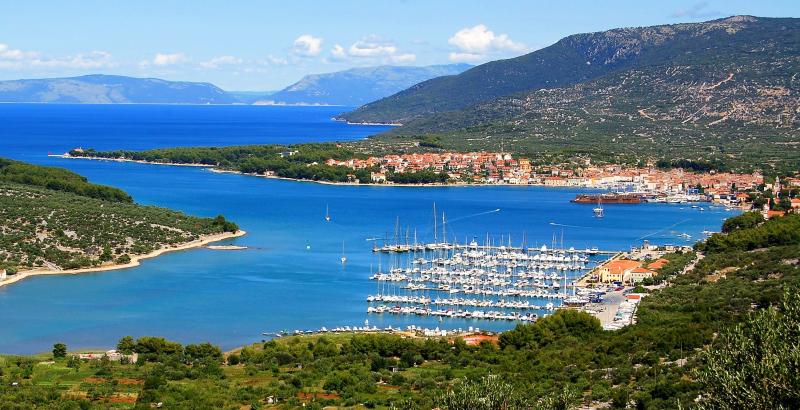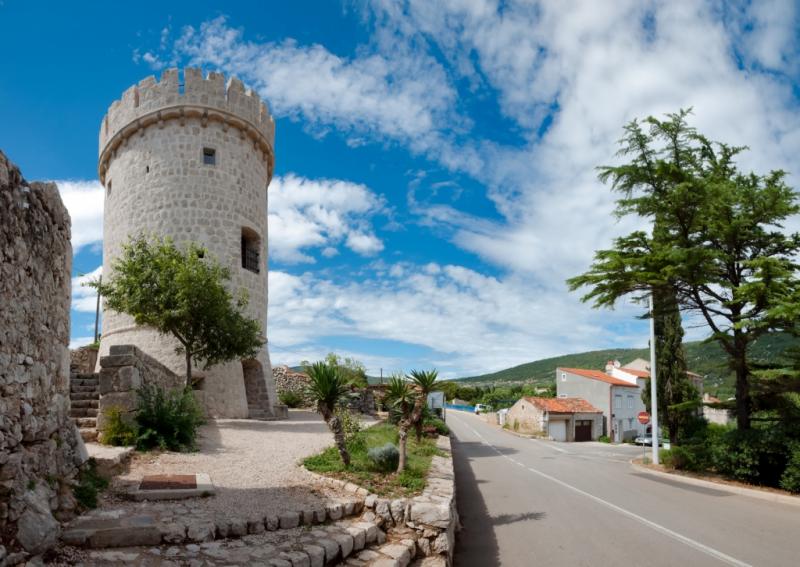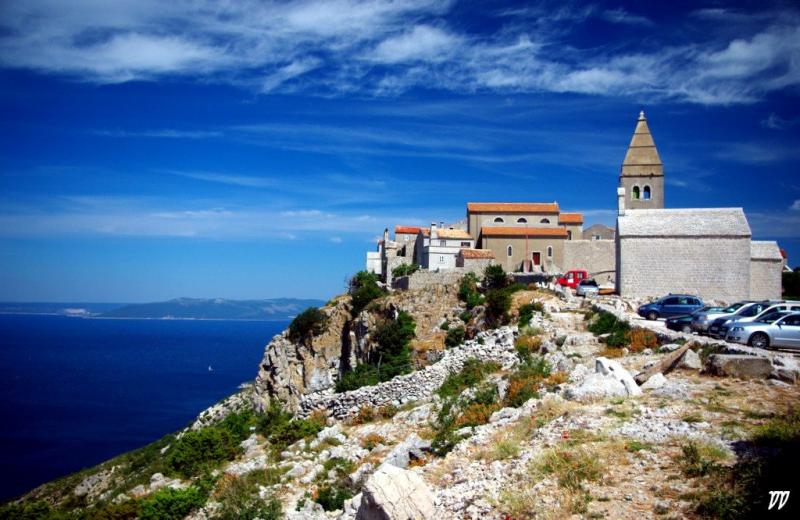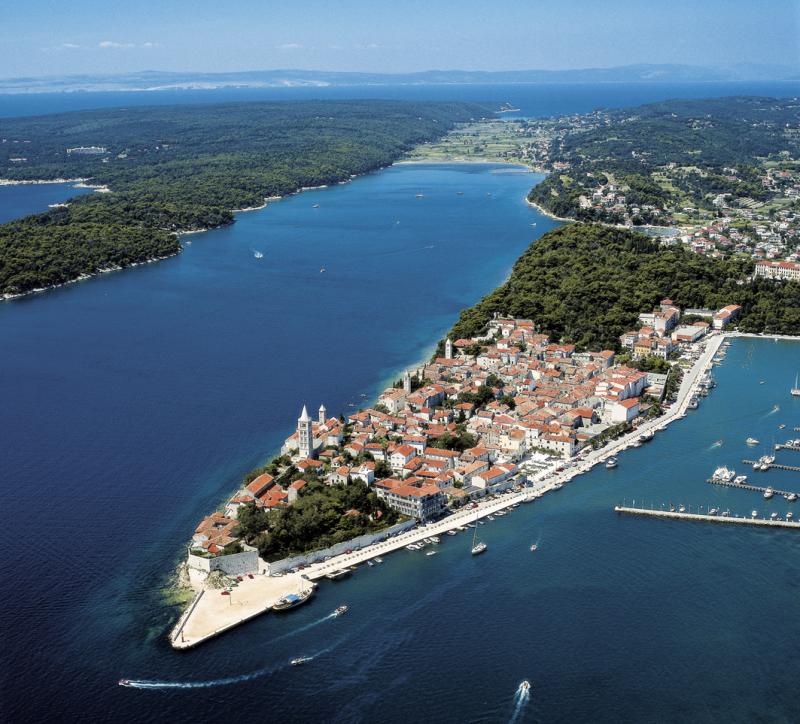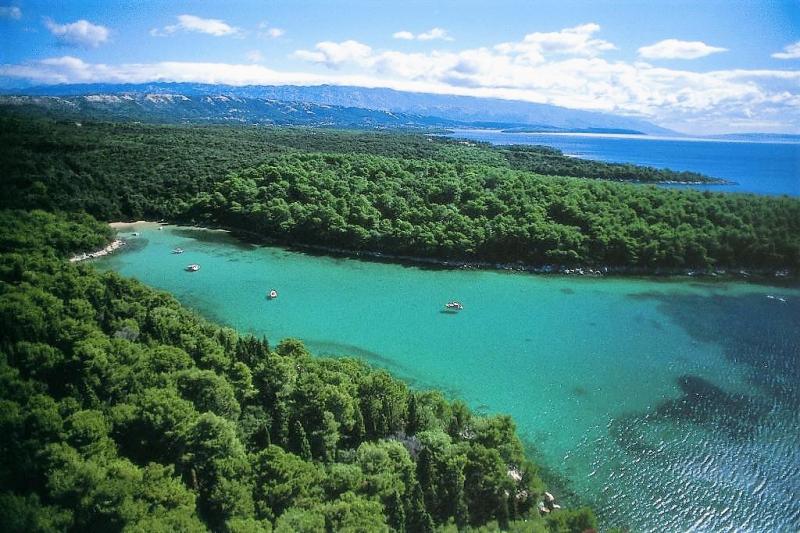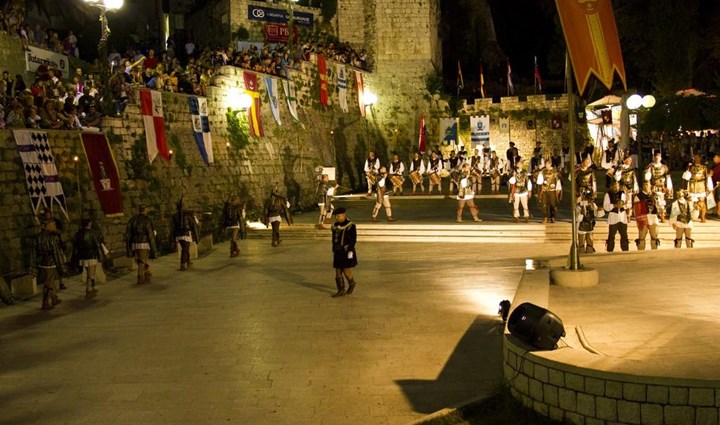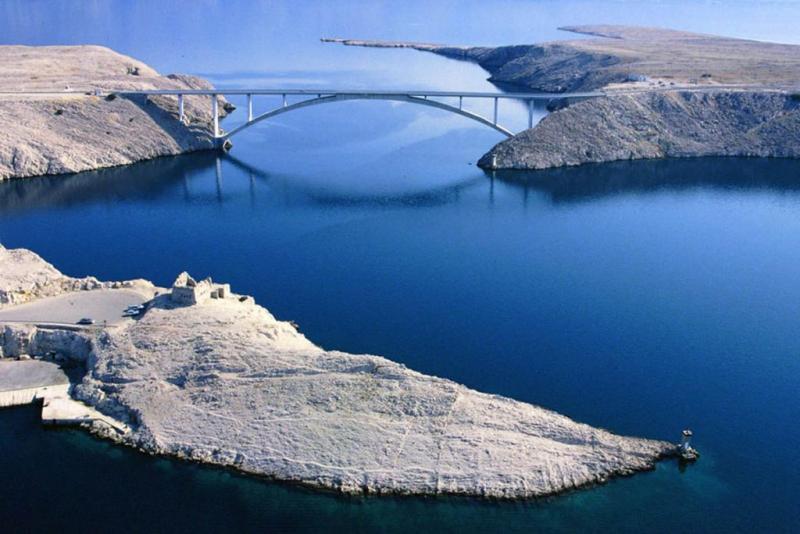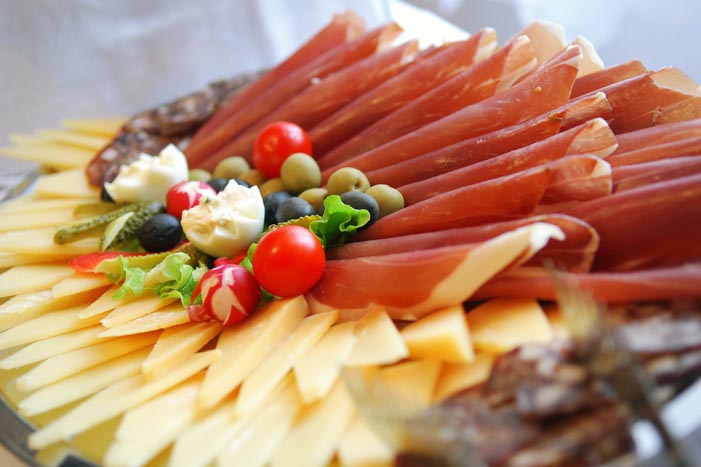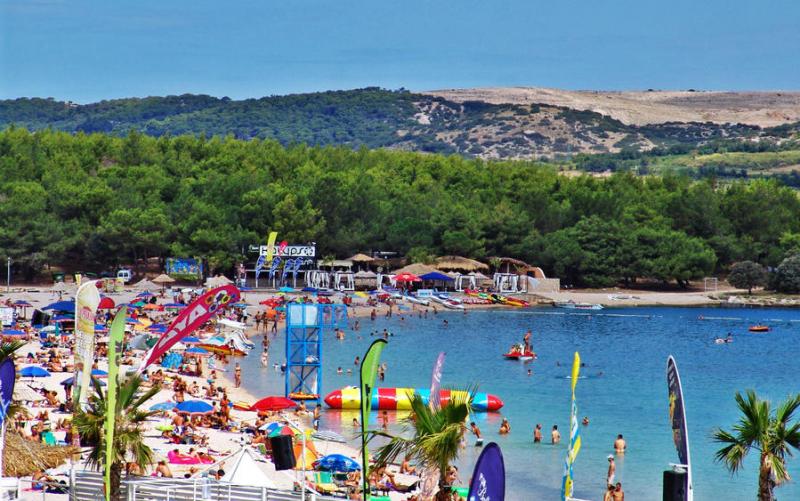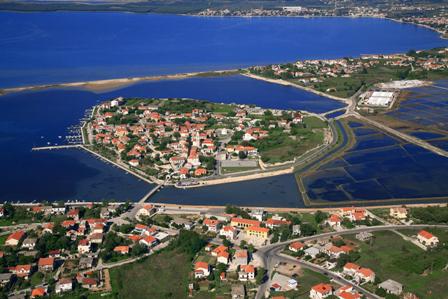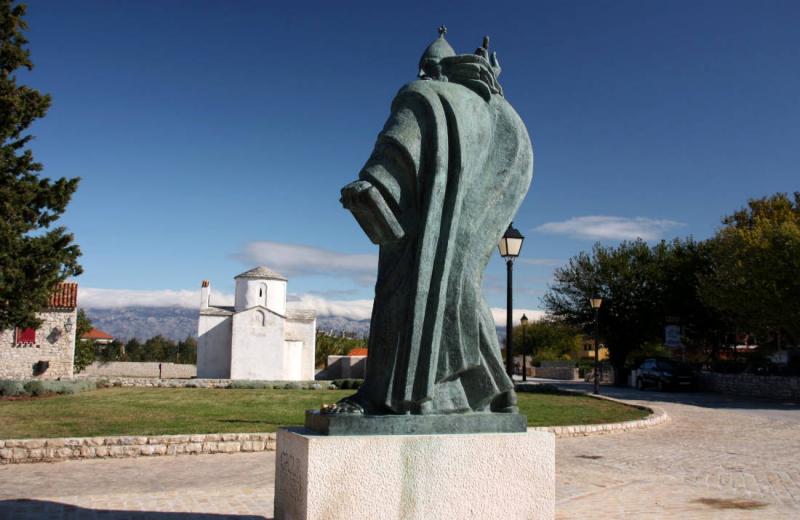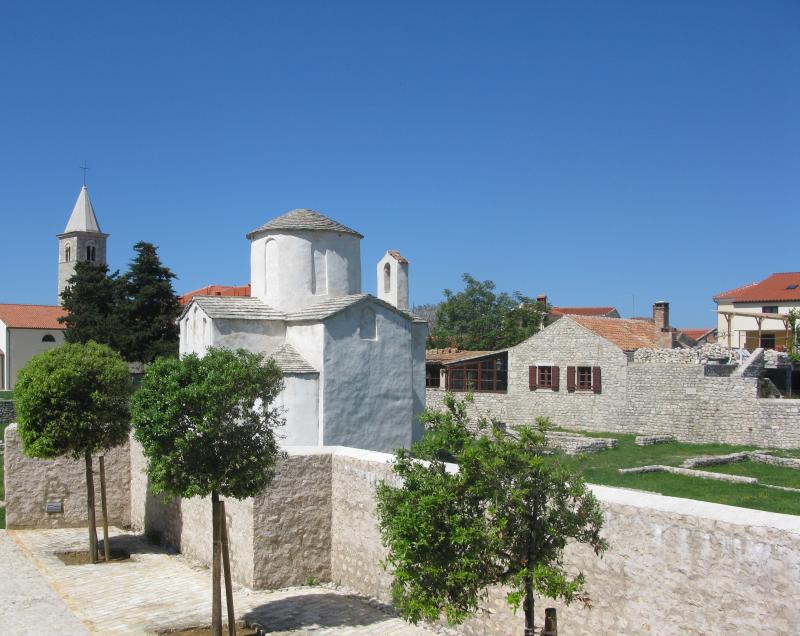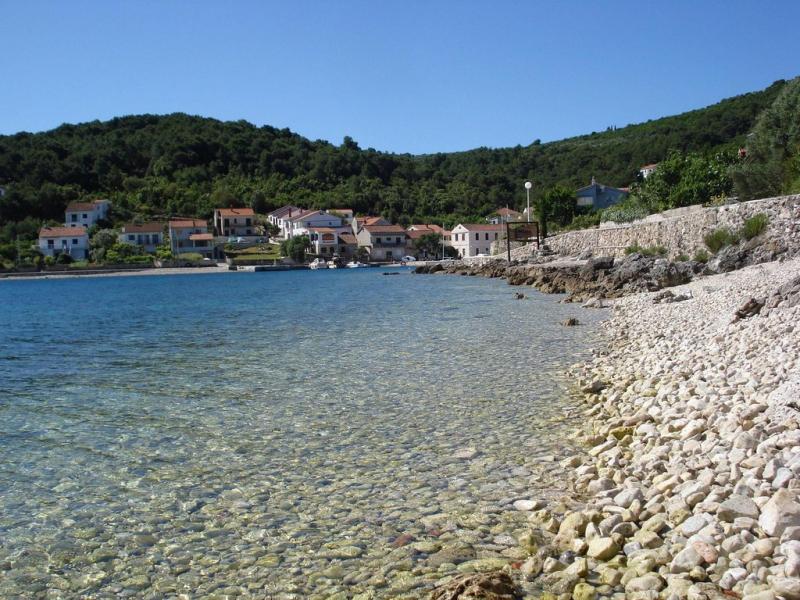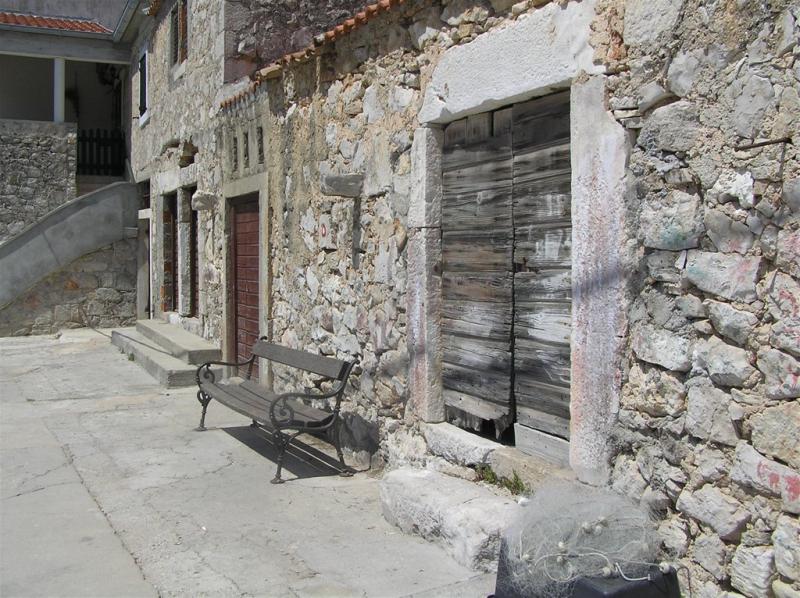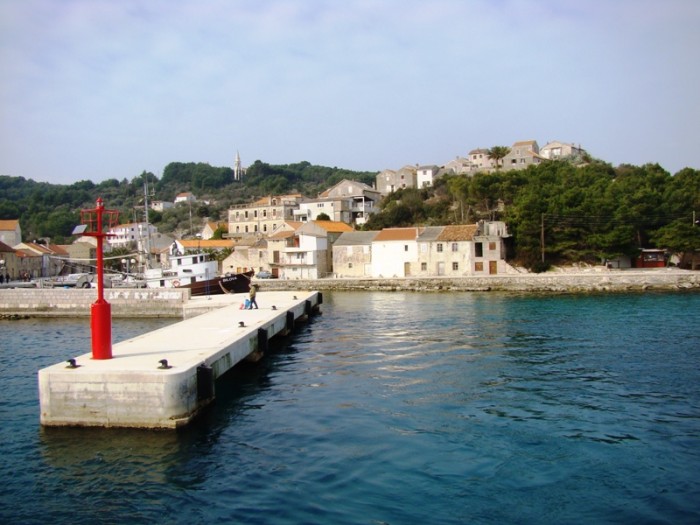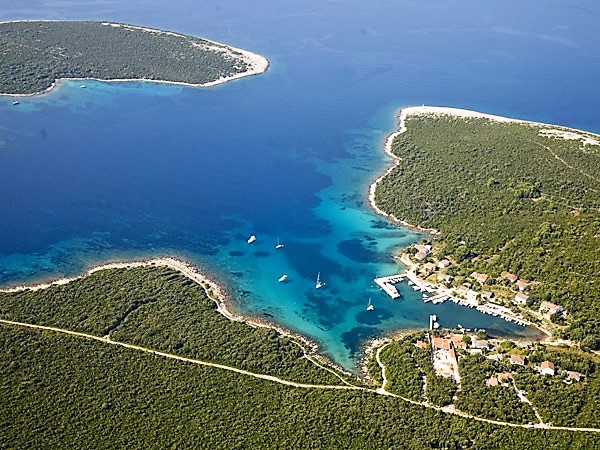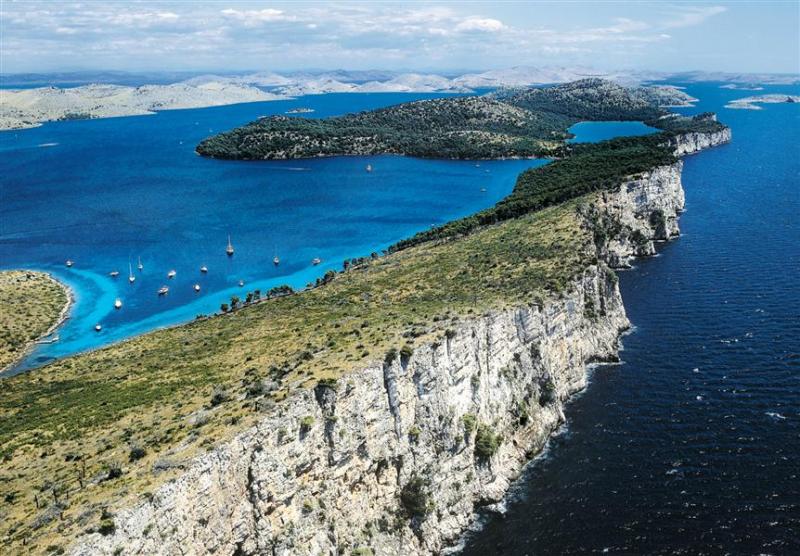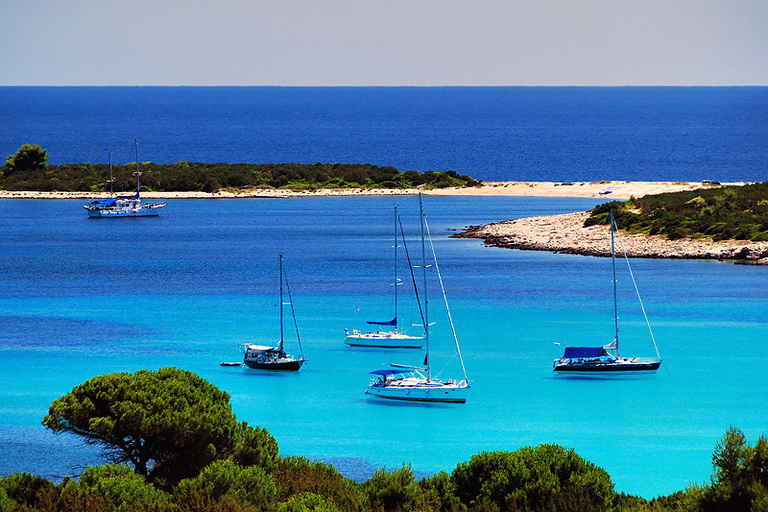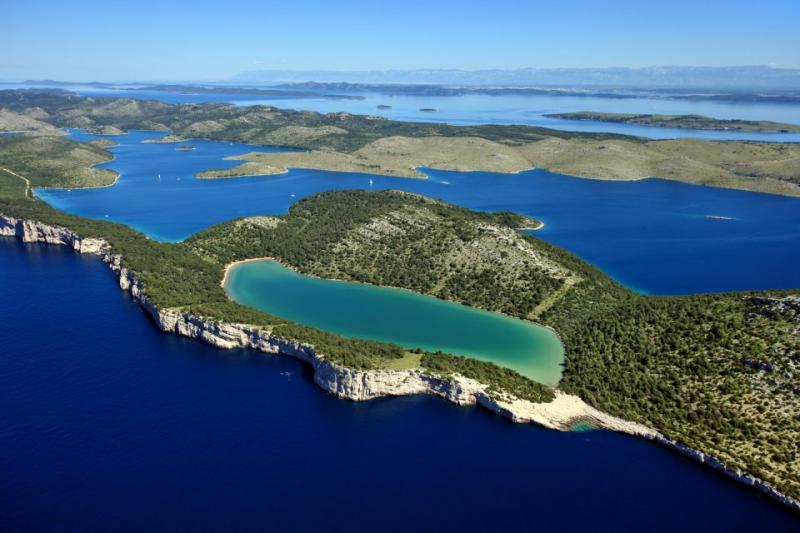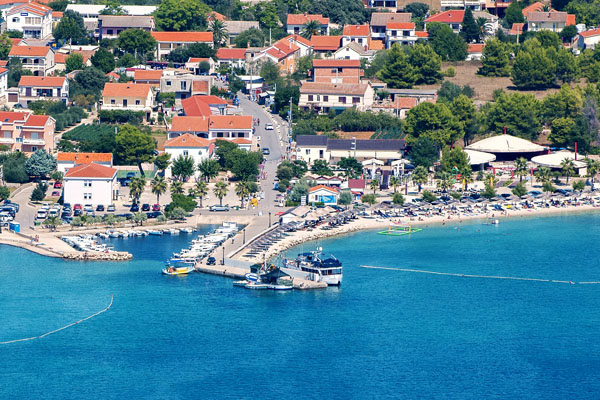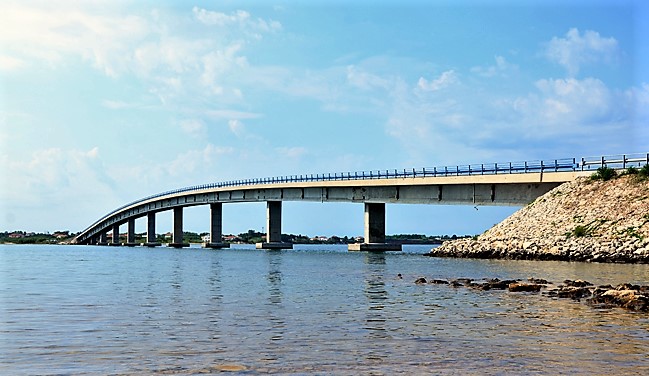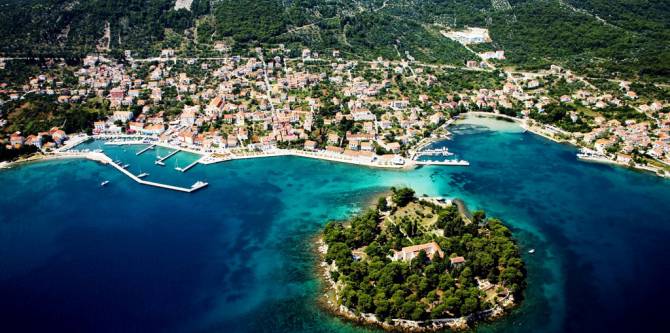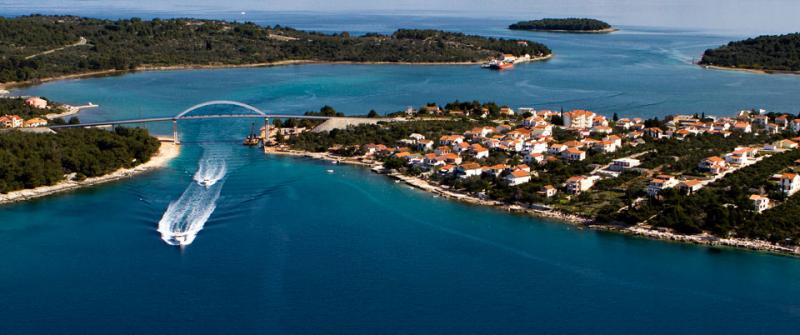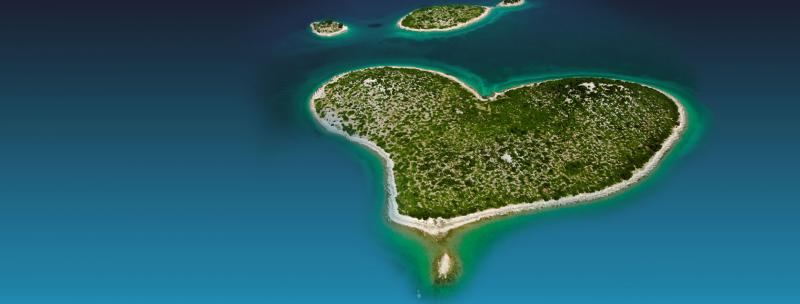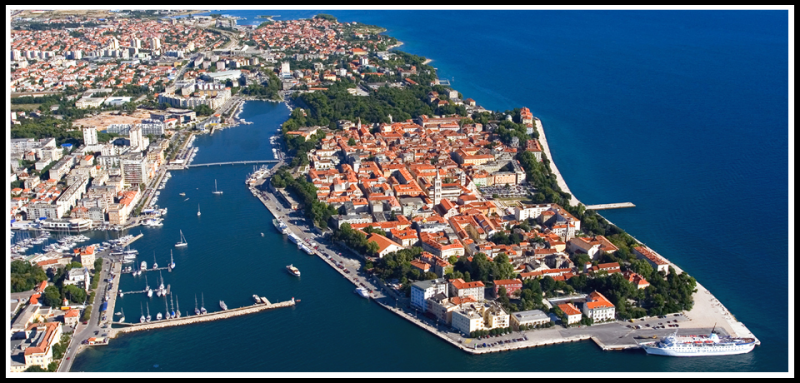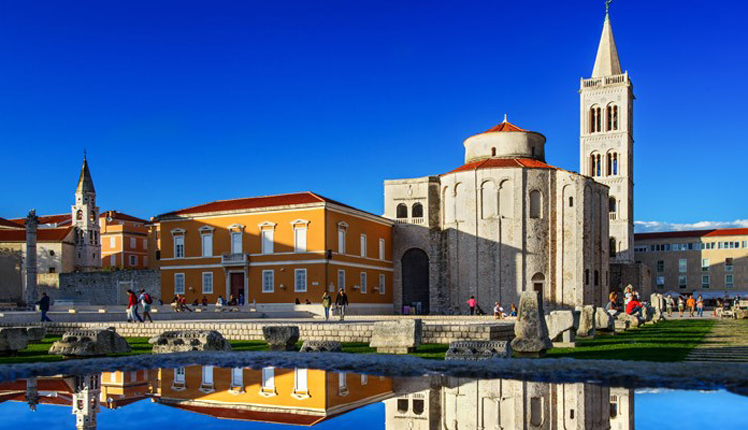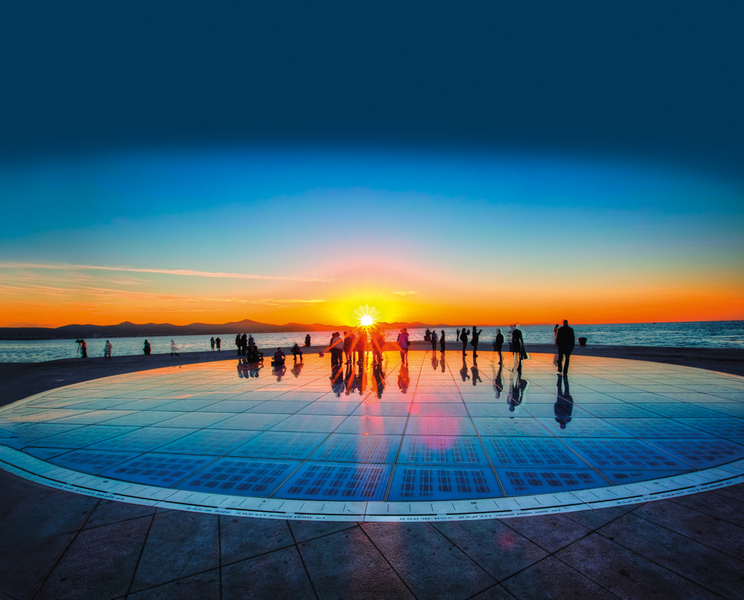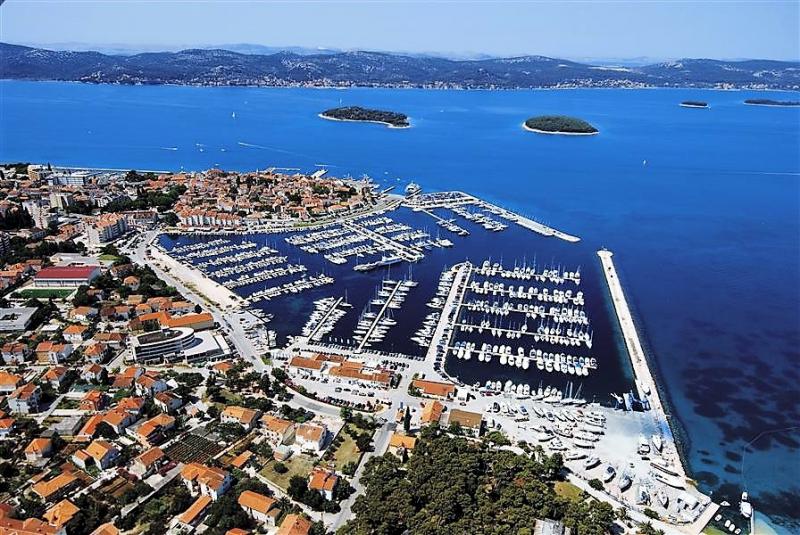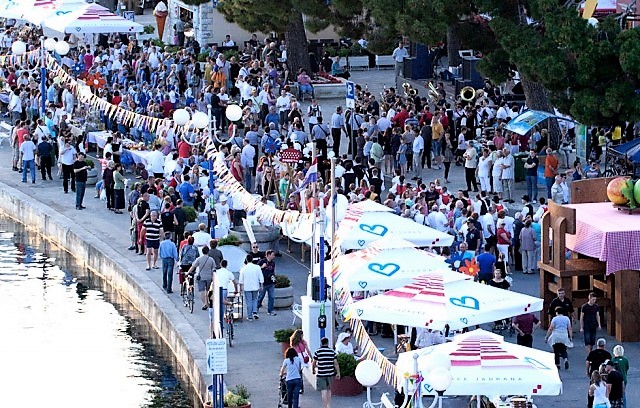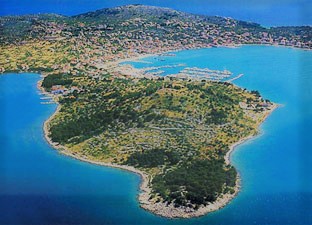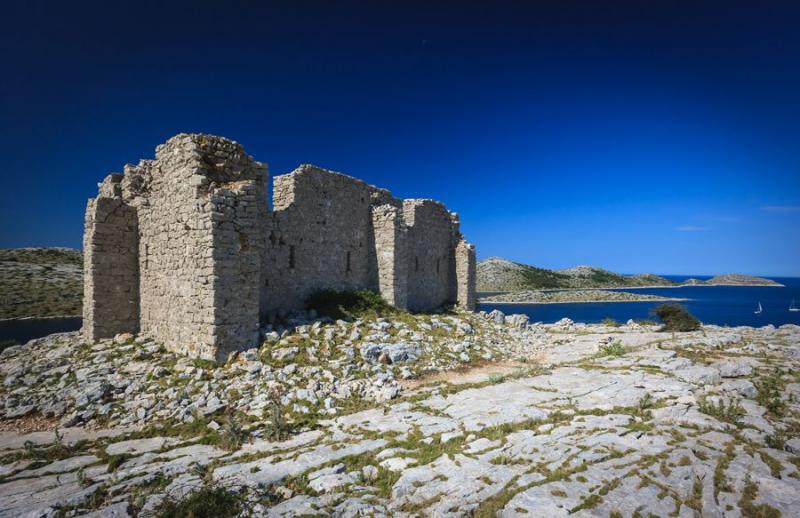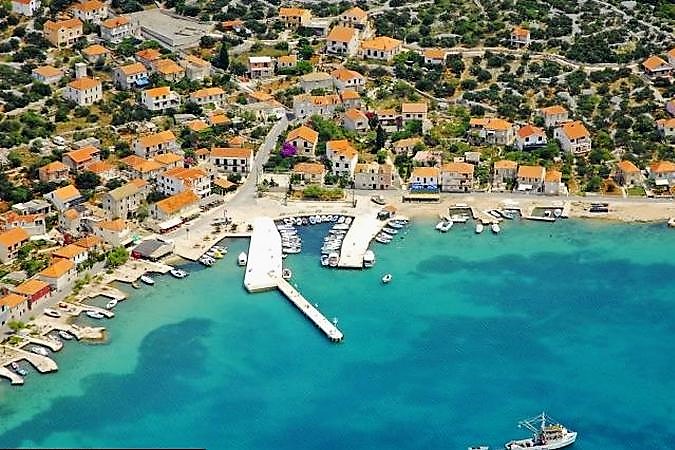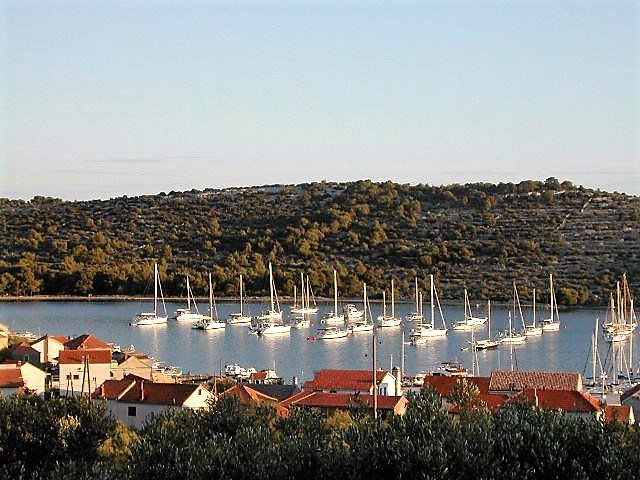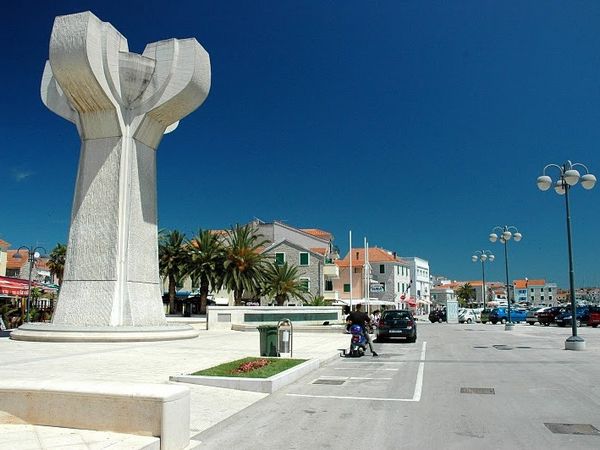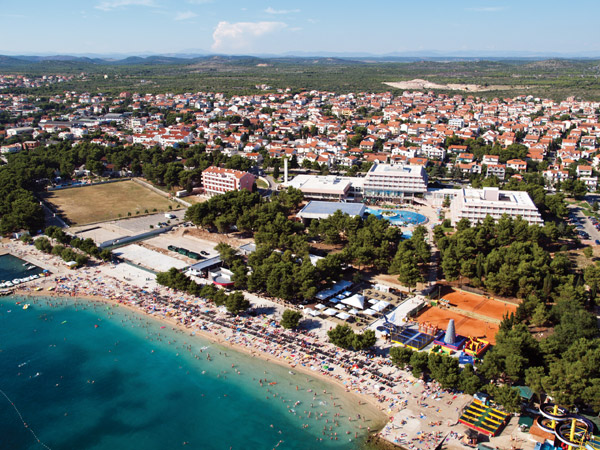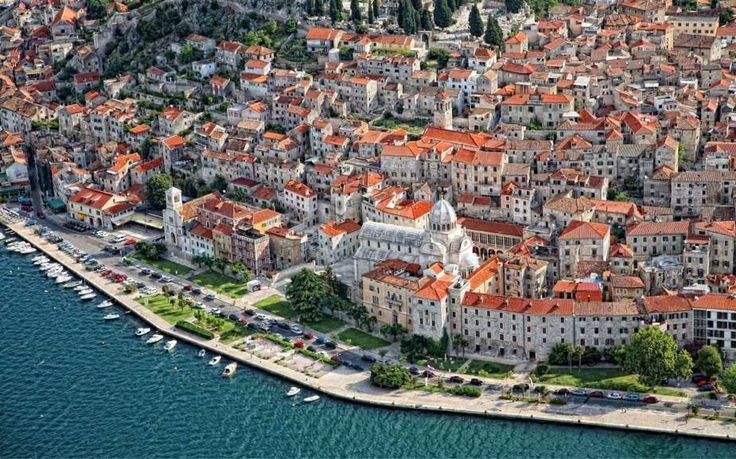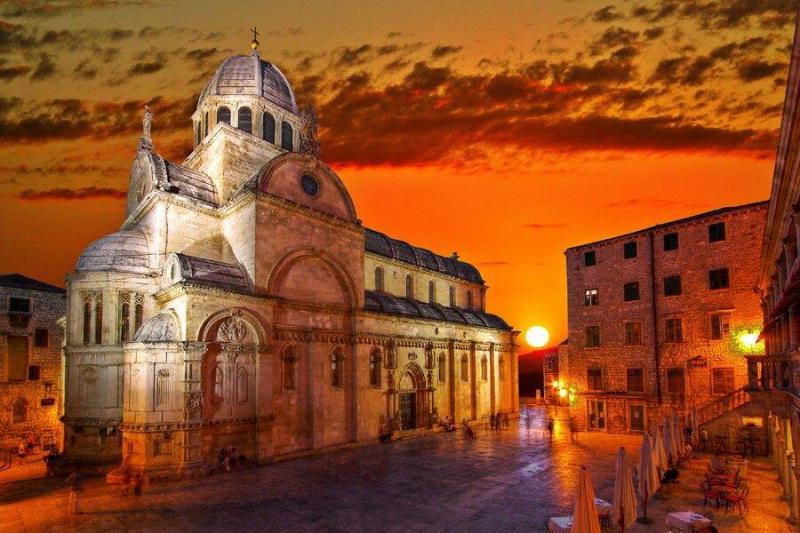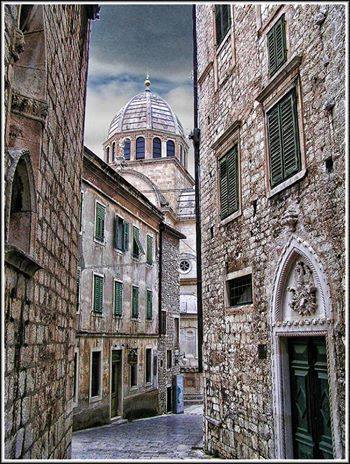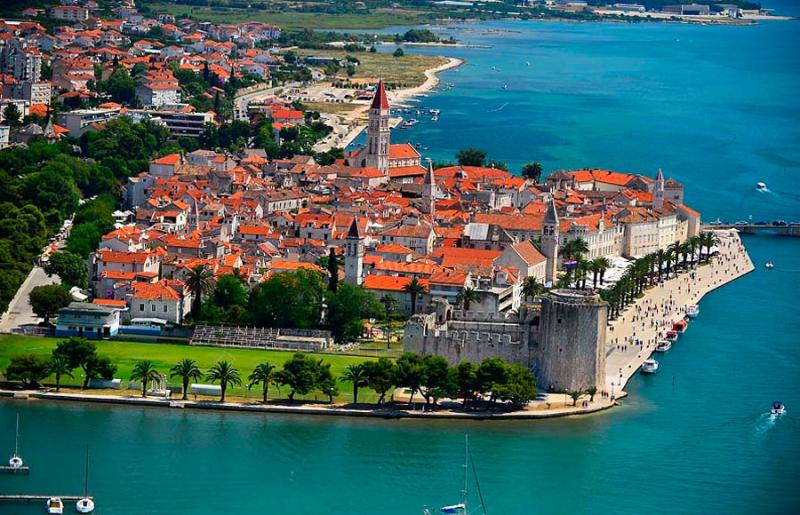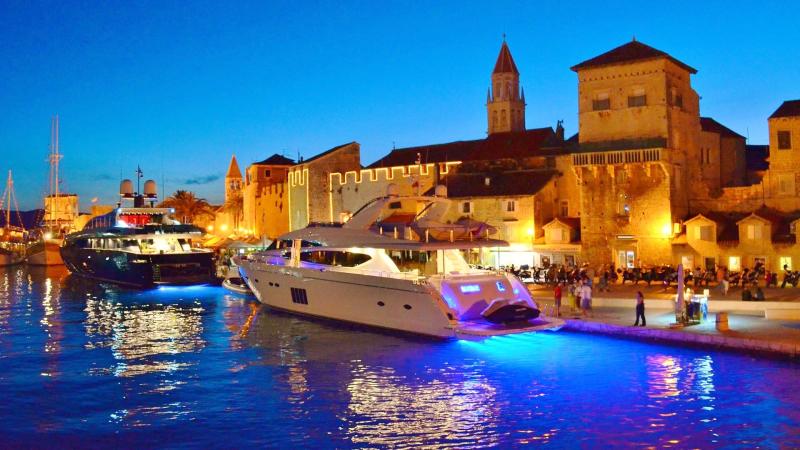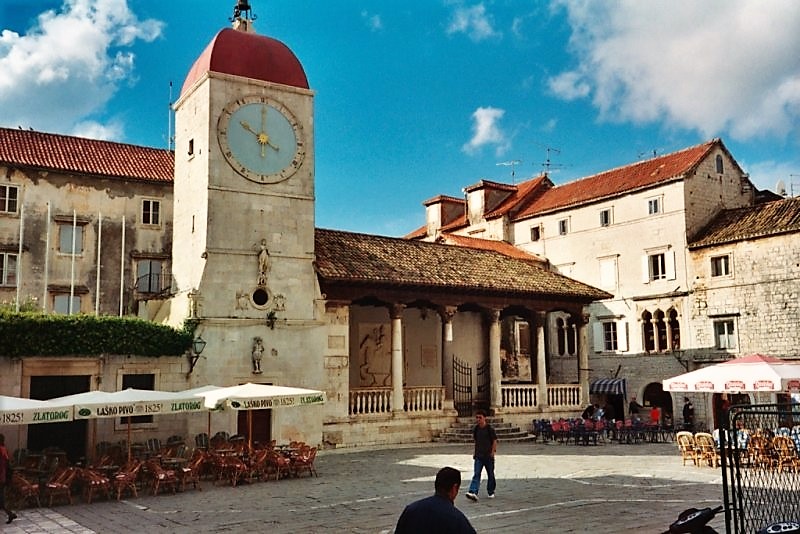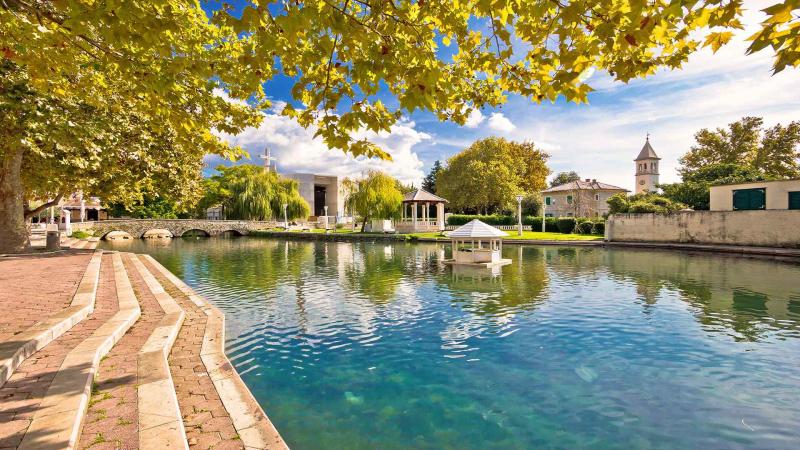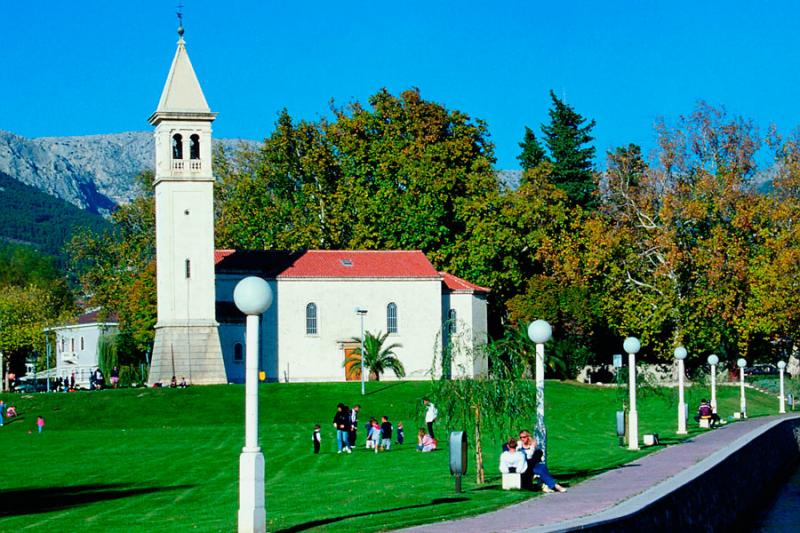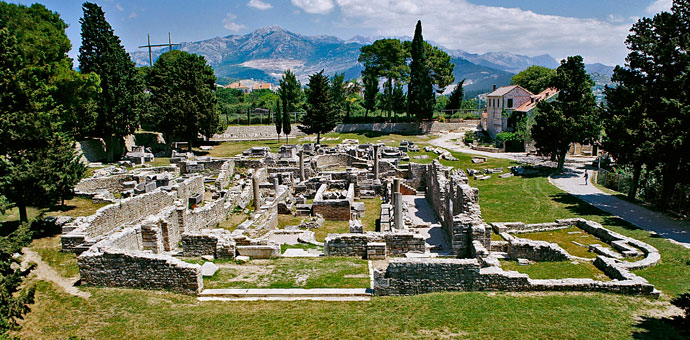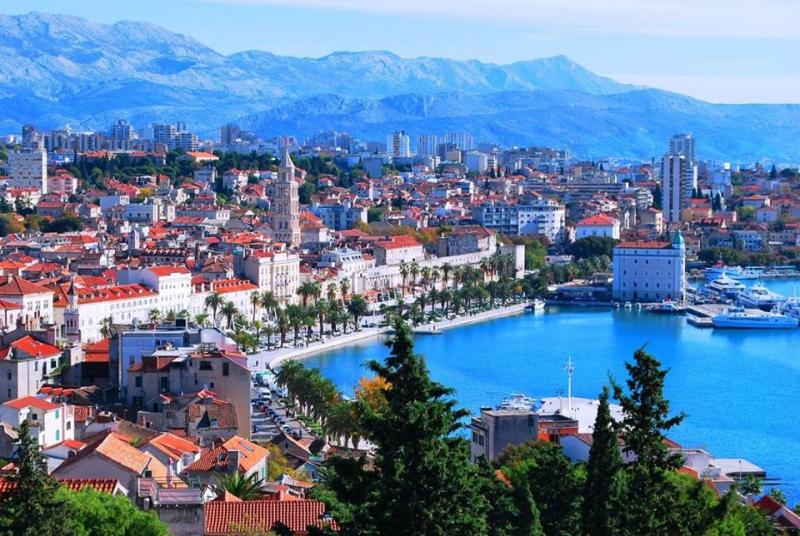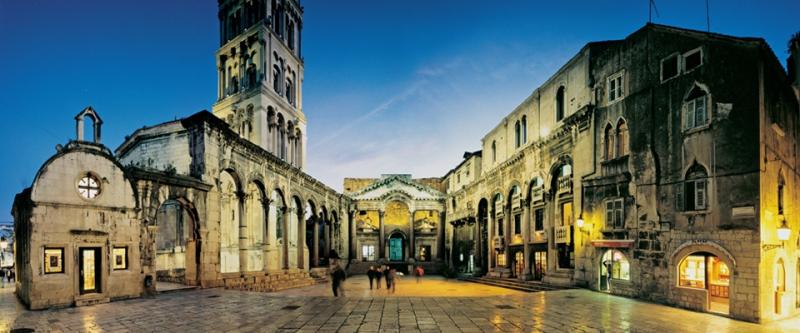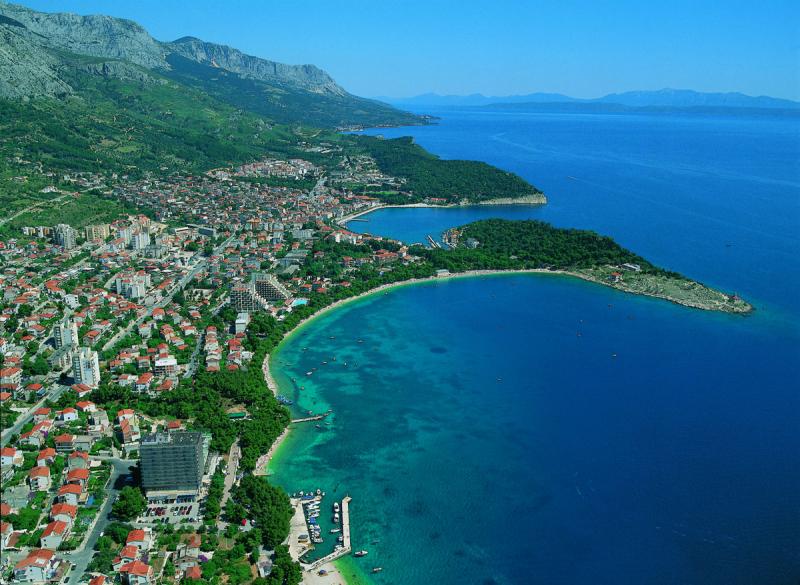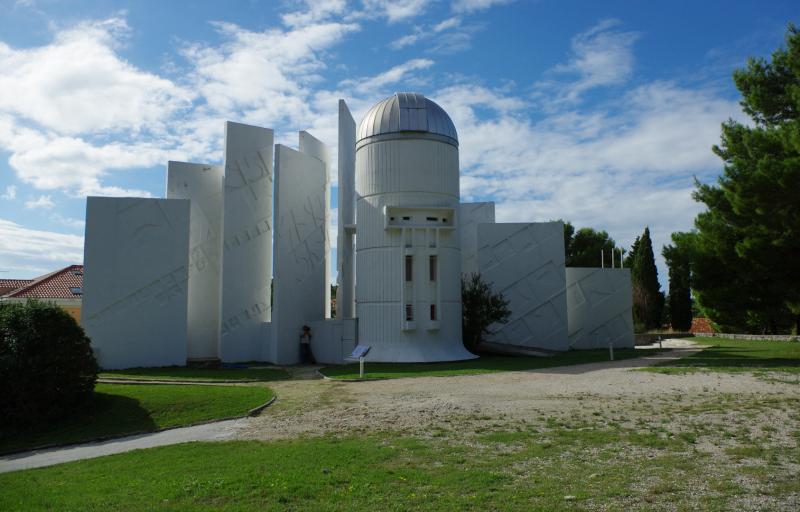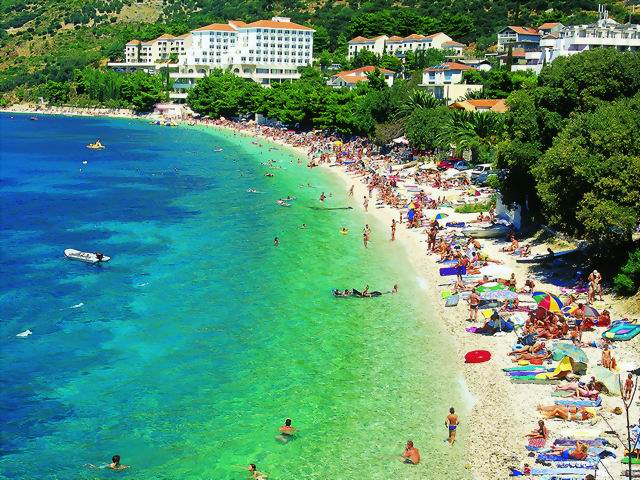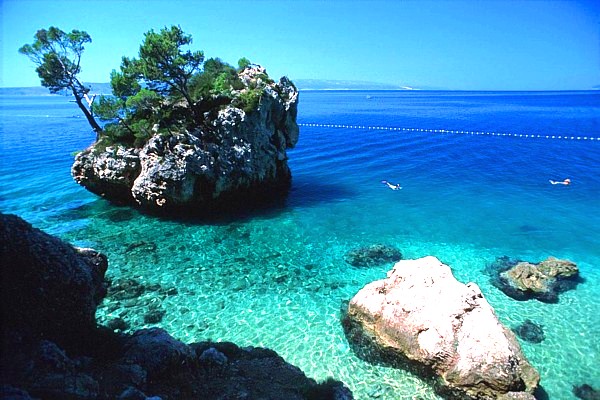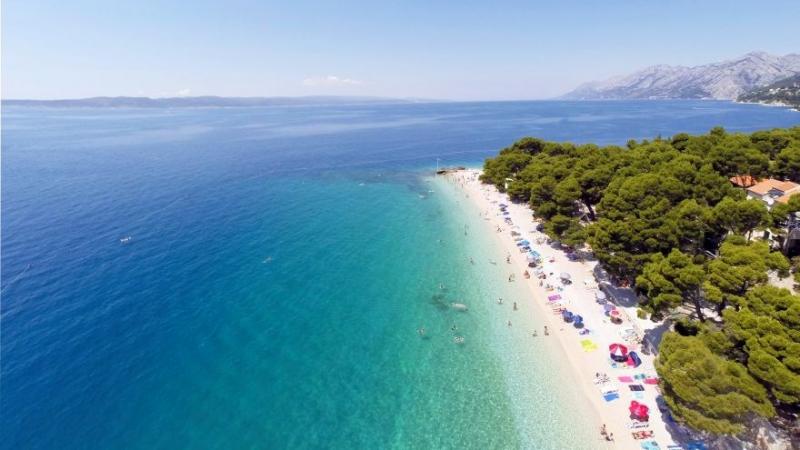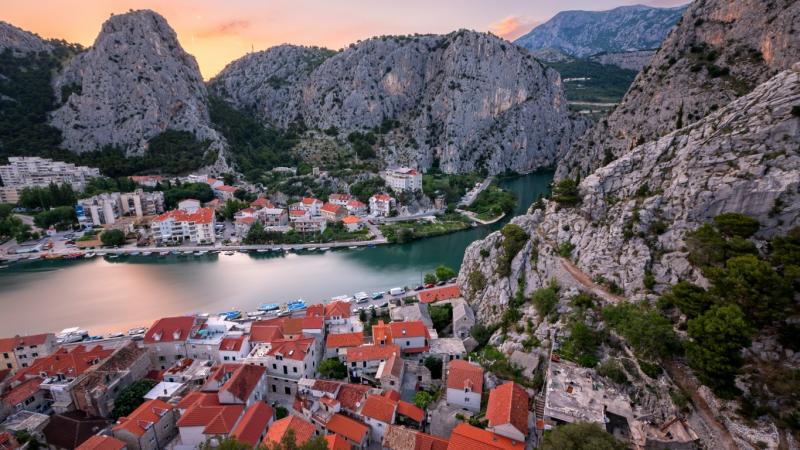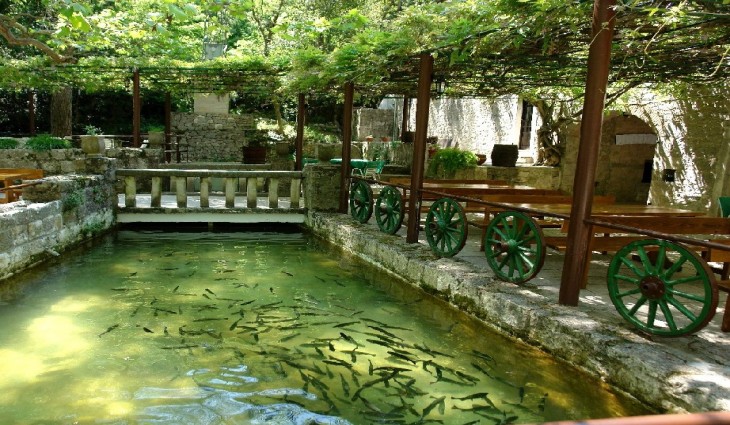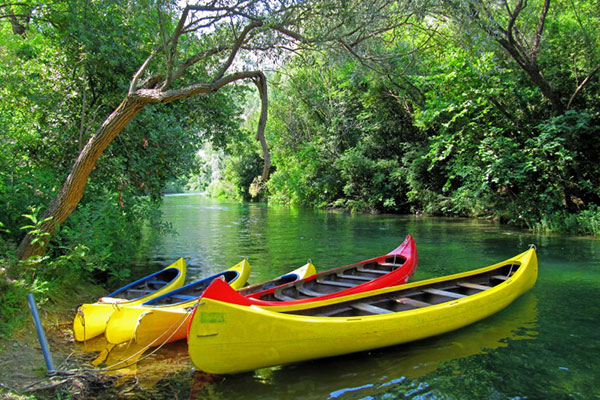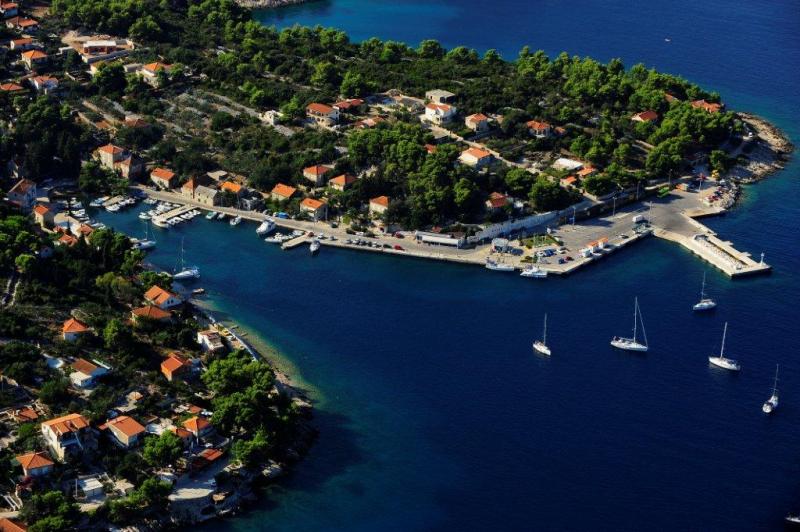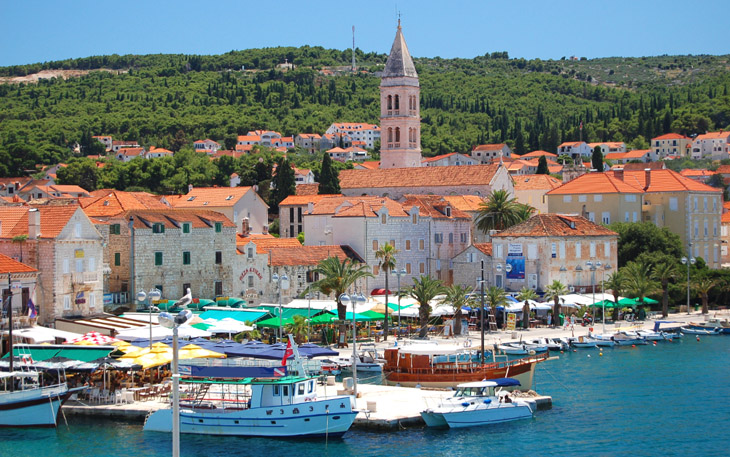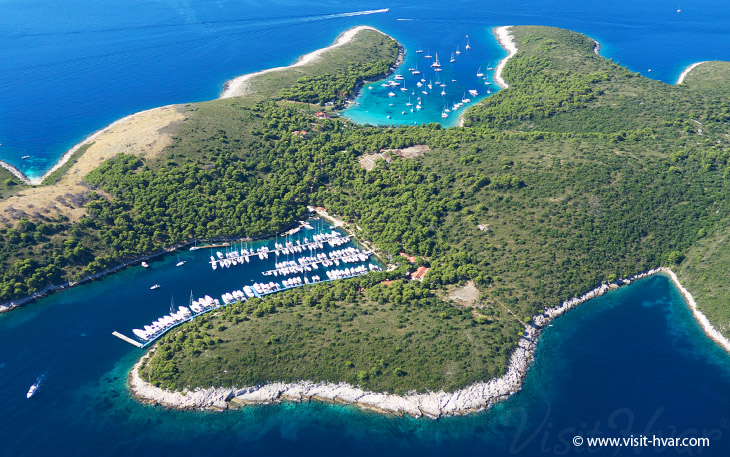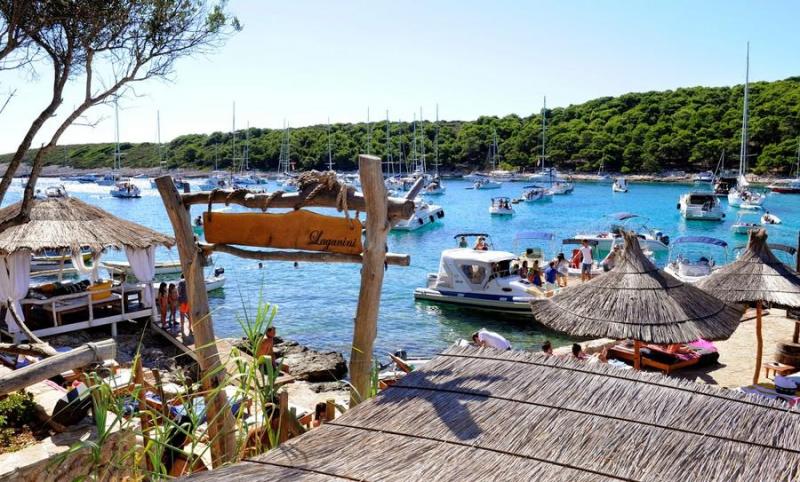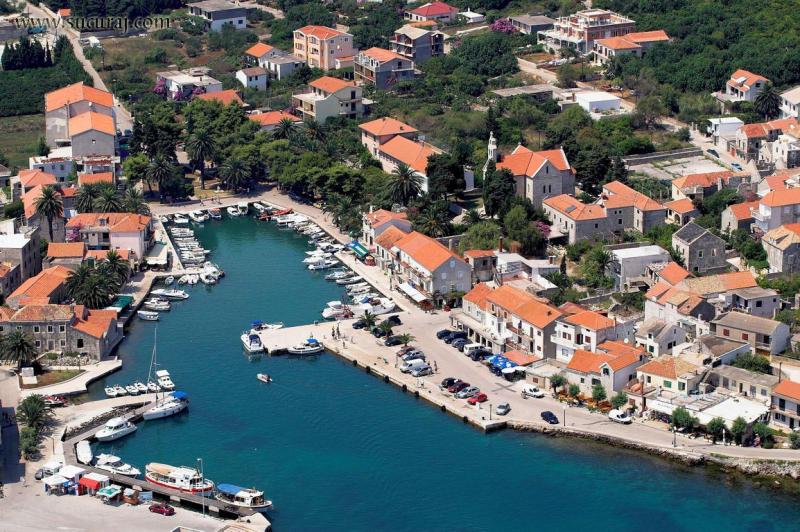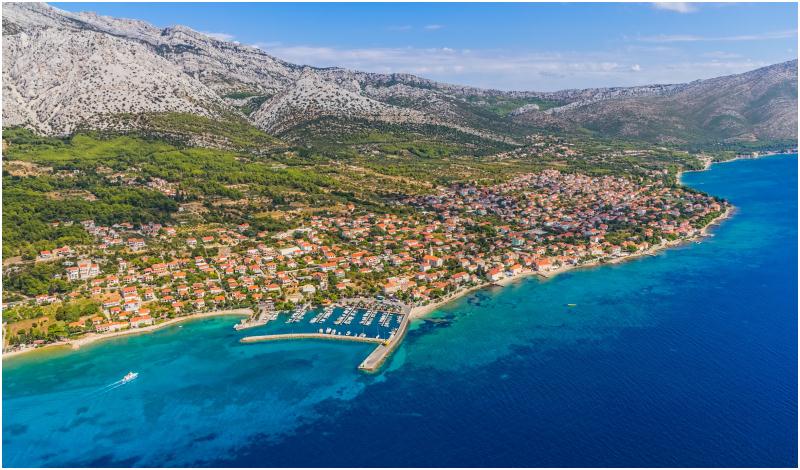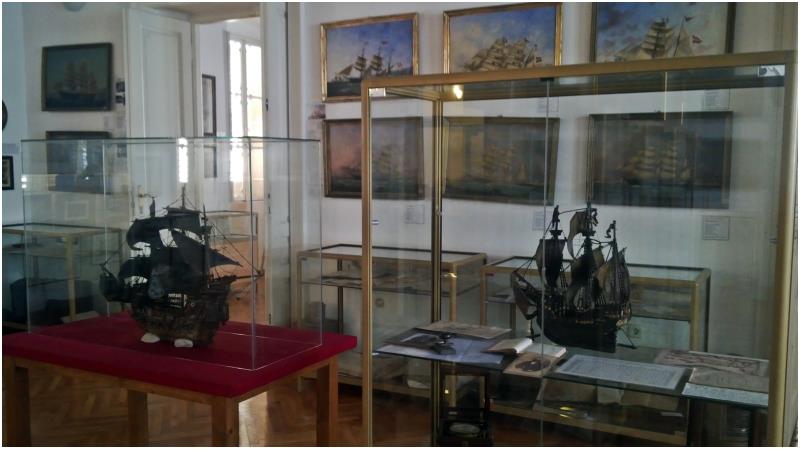General info
Area
Mainland – 56.594 km2
Territorial waters – 31.064 km2
Population
2009 – 4.489.409
Capital (and largest city)
Zagreb
System of Government
Multi-party parliamentary Republic
Official language
Croatian
Currency
Euro (EUR)
Time zone
CET (UTC+1)
Summer (DST) CEST (UTC+2)
Calling code
385
Area
Mainland – 56.594 km2
Territorial waters – 31.064 km2
Population
2009 – 4.489.409
Capital (and largest city)
Zagreb
System of Government
Multi-party parliamentary Republic
Official language
Croatian
Currency
Euro (EUR)
Time zone
CET (UTC+1)
Summer (DST) CEST (UTC+2)
Calling code
385
Natural beauty and diversity
Croatian coast is the most developed in Europe. 1777 km along the coastline extends about 1185 islands, islets and rocks. Each special. Each of them has its own special story and its place in history and certainly everyone can find the island just for himself, the haven to escape from everyday life. Certainly we need to mention four national parks that you can visit during your charter holiday.
Brijuni, a group of two larger and twelve smaller islands, rich in rare plant and animal species.
Kornati, the most developed island group in the Mediterranean with 140 islands of which the GB Shaw wrote: "On the last day of the Creation God desired to crown His work and thus created Kornati Islands out of tears, stars and breath."
Krka, the most beautiful karst river which you can visit by taxi boat from Skradin.
Mljet, also called The Green Island because of its dense vegetation. The great attractions are the Big and Small Lake, Polace site, Ulysses Cave and the Benedictine monastery located on the island of St. Mary in the Big Lake.
The rich historical legacy which can be found in homes, churches and palaces, each of our places on the coast and islands. Noteworthy are Euphrasian Basilica in Porec, the Sibenik cathedral, historical centre of Trogir, the Diocletian’s Palace in Split and the ancient town of Dubrovnik, which are under protection of UNESCO and the house of Marco Polo in Korcula, the oldest theatre in Europe in Hvar, the Arena in Pula The monastery in the desert Blace on island of Brac. It is impossible to enumerate all, but be sure if you visit any place you will find yourself in a living museum because every stone a piece of history.
Cultural heritage is nurtured especially on the islands. Croatian folklore with songs and dances of our ancestors is the extraordinary value of these areas. During the summer there are numerous cultural events such as the International Children's Festival in Sibenik, Split Cultural Summer, Dubrovnik Cultural Summer, Film Festival in Pula and Motovun. If you find yourself on Korcula, be sure to see Moreska and Kumpanji - chivalrous dances.
Gastronomic offer is a special value for each area. Whether this is your main reason for visiting or casual delicacy definitely try some of the delicacies and specialties of the region: smoked ham (prsut), cheese, olives and olive oil, figs, fish specialties, pasticada, desserts such as fritters, krostule and rozada.
Croatian coast is the most developed in Europe. 1777 km along the coastline extends about 1185 islands, islets and rocks. Each special. Each of them has its own special story and its place in history and certainly everyone can find the island just for himself, the haven to escape from everyday life. Certainly we need to mention four national parks that you can visit during your charter holiday.
Brijuni, a group of two larger and twelve smaller islands, rich in rare plant and animal species.
Kornati, the most developed island group in the Mediterranean with 140 islands of which the GB Shaw wrote: "On the last day of the Creation God desired to crown His work and thus created Kornati Islands out of tears, stars and breath."
Krka, the most beautiful karst river which you can visit by taxi boat from Skradin.
Mljet, also called The Green Island because of its dense vegetation. The great attractions are the Big and Small Lake, Polace site, Ulysses Cave and the Benedictine monastery located on the island of St. Mary in the Big Lake.
The rich historical legacy which can be found in homes, churches and palaces, each of our places on the coast and islands. Noteworthy are Euphrasian Basilica in Porec, the Sibenik cathedral, historical centre of Trogir, the Diocletian’s Palace in Split and the ancient town of Dubrovnik, which are under protection of UNESCO and the house of Marco Polo in Korcula, the oldest theatre in Europe in Hvar, the Arena in Pula The monastery in the desert Blace on island of Brac. It is impossible to enumerate all, but be sure if you visit any place you will find yourself in a living museum because every stone a piece of history.
Cultural heritage is nurtured especially on the islands. Croatian folklore with songs and dances of our ancestors is the extraordinary value of these areas. During the summer there are numerous cultural events such as the International Children's Festival in Sibenik, Split Cultural Summer, Dubrovnik Cultural Summer, Film Festival in Pula and Motovun. If you find yourself on Korcula, be sure to see Moreska and Kumpanji - chivalrous dances.
Gastronomic offer is a special value for each area. Whether this is your main reason for visiting or casual delicacy definitely try some of the delicacies and specialties of the region: smoked ham (prsut), cheese, olives and olive oil, figs, fish specialties, pasticada, desserts such as fritters, krostule and rozada.
Climatic conditions in Croatia are favourable and moderate, with no major difference in temperature and a proper modification of the four seasons. In Croatia, there are three types of Climate:
- Northern Croatia: moderate humid continental climate (with warm summers and cold temperatures and snow in winter)
- Southern Croatia: Mediterranean climate (mild throughout all year round with hot summers and mild winters)
- The highest peaks have snow-forest climate.
Review of monthly values for the city of Split:
| January | February | March | April | May | June | July | August | September | October | November | December | |
|---|---|---|---|---|---|---|---|---|---|---|---|---|
| avg air temperature | 7,9 | 8,2 | 10,6 | 14,1 | 19 | 23 | 25,8 | 25,5 | 21,4 | 17,1 | 12,4 | 9,2 |
| Sunshine duration | 131,5 | 147,9 | 186,8 | 217,2 | 273 | 307,4 | 350,3 | 324,8 | 247,3 | 196,9 | 130,6 | 119,3 |
| Rainfall (mm) | 77,3 | 62,8 | 63,4 | 62,6 | 55,4 | 49,7 | 26,1 | 42,7 | 71 | 76,5 | 112,9 | 103,5 |
| Clear sky | 7 | 7 | 7 | 6 | 7 | 8 | 15 | 16 | 12 | 10 | 6 | 7 |
| Fog | 0 | 0 | 0 | 0 | 0 | 0 | 0 | 0 | 0 | 0 | 0 | 0 |
| Rain | 11 | 10 | 10 | 10 | 9 | 9 | 6 | 5 | 7 | 9 | 12 | 13 |
| Frost | 1 | 0 | 0 | 0 | 0 | 0 | 0 | 0 | 0 | 0 | 0 | 0 |
| Snow | 1 | 1 | 0 | 0 | 0 | 0 | 0 | 0 | 0 | 0 | 0 | 1 |
Winds
In the Adriatic 8 winds prevail: Tramontana (N) Bora (NE), Levant (E), Scirocco (SE), Sharp (S), Lebic (SW), Pulenat (W), Mistral (NW) from which the most important are Bora and Scirocco.
Bura (NE):is a very strong northerly wind that blows from cold mainland. The main feature is that the wind is blowing in bursts (refuli) with alternating weaker or stronger bora with breaks during which the wind is weak. Bora appears suddenly, descends steeply to the sea surface and creates a very rough sea. During winter bora lasts for several days, and achieves great strength. Because of its characteristics bora is a very dangerous wind and not recommendable for sailing.
South wind or Scirocco (SE): is the wind that blows from the southeast. The main features are that carries warm and rainy weather, and creates high waves. South wind begins to blow gradually, the signs of south wind are haze and cloudy horizon to the southeast. Although it usually blows in the colder months, it can blow in summer also.
Mistral (NW):is the wind typical for the summer period. Usually starts blowing around 9 -11 hours, and stops in the late afternoon. It is very pleasing because it disperses the heat of summer and is suitable for sailing.
Tramontana (N): is a dry, chilly, fleeting wind like bora. Unlike bora is blowing less frequent and without bursts. More often blows in the south than in the north part of Adriatic.
Levanat (E): a transitory wind that occurs when the bora passes sirocco and vice versa. Usually blows from the east.
Sharp (S): usually occurs in the open Adriatic, when approaching the cyclone from the northwest or west.
Lebic (SW): is a strong stormy wind, develops and carries strong waves and precipitation. Stronger in the colder time of year when it can be dangerous, suddenness and intensity may endanger unprotected vessels.
Ponent (W): the wind that seldom blows. It is dangerous wind strength up to 12 Bf, comes suddenly and lasts briefly bringing abundant rain.
Adriatic sea
The Adriatic Sea is a shallow water, depth gradually increases as you move from north to south. In the north, the greatest depth is 50 m, in the south 1 240m. Average sea surface temperature in winter is 7 - 14 °C, summer 22-25 °C. Salinity is 38.30 ‰.
Sea currents have no significant impact on the safety of navigation in the open sea. Direction of current is variable, the average speed is 0.5 knots, but can reach up to 4 knots. Tides have relatively small amplitude, in the southern Adriatic 40-tak cm. In the north a little more. Tides are mixed type, which means that their rhythm is semidiurnal during the new and full moon, a daily rhythm during the first and last quarter, their amplitudes are very irregular. Sea waves are a result of the winds, the height is mainly between 0.5 and 1.5 m, rarely exceeding 5 m.
